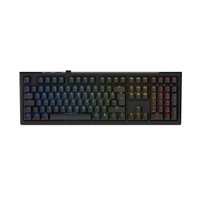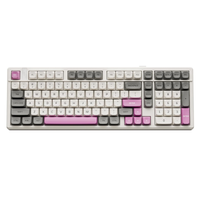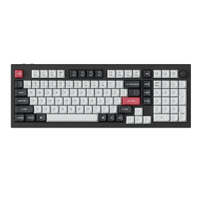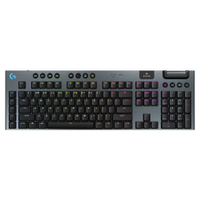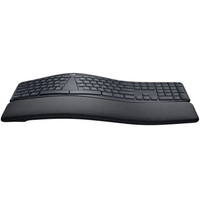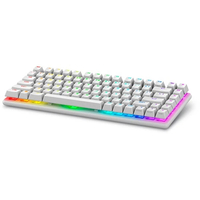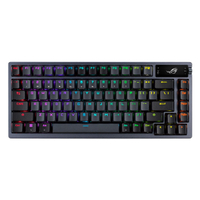Best wireless gaming keyboard in 2025: my top picks for cable-free typing delights
Cut the cord with the best wireless gaming keyboards.

The best wireless gaming keyboards offer a degree of flexibility and freedom that you just don't get with a regular wired keyboard. Freeing your wireless keyboard from the chains of its cable means that you'll have the option to use it wherever you like, from your lap to the sofa and beyond. Within range, anyway.
The best wireless keyboard is the Asus ROG Strix Scope II 96 Wireless. While that's a long name to remember, the board itself is simply the best we've used in a very long time, with an excellent typing feel, useful programmable features, and a sturdy yet compact frame. The best budget wireless keyboard is the Keychron K2 (version 2), as its 240-hour battery life and typing feel are genuinely impressive for a keyboard this cheap.
We've seen all sorts in our many years reviewing keyboards, and here we've listed the absolute best of the best, to make sure you get the wireless typing and gaming experience you're looking for. Given you're thinking about going cable-free, now might be an idea to take a look at our guides to the best wireless gaming headsets and the best wireless mice, as once you start breaking free of the dreaded cables, there's really no going back.

As someone that's tested more keyboards than most, Jacob's well qualified to give you the low-down on where to put your money if you're in the market for a fantastic cable-free typing experience, and which will give you the best bang for your wireless keyboard buck.
May 15, 2025: Added the Cherry MX 8.2 TKL Wireless XAGA and 8BitDo Retro to also tested. The latter keyboard is a tad expensive, with a limited app. The former is great for its price, but rather niche thanks to loud keys and unique Super Buttons. We have also checked over recommendations and tightened formatting in the also tested section.
March 18, 2025: Added the Ducky Zero 6108 as our pick for the best mid-range wireless keyboard, because it comes in at a very appealing price point for a well-rounded keyboard. We also added the Ducky One X to our Also Tested section, and checked to make sure the rest of our picks are the best wireless boards on the market right now.
February 11, 2025: Replaced our previous pick for the best Hall effect wireless keyboard with the Keychron K2 HE, ensured that all our other picks still represent the best wireless gaming keyboards (they do!), and added a few keyboards to our Also Tested section.
The quick list

Best overall
The Asus ROG Strix Scope II 96 Wireless takes our top spot for the best overall wireless keeb, thanks to its superb switch feel, excellent build quality, and solid sound dampening. It's also got PBT keycaps, an adjustable media wheel, hot-swappable switches, and it's pretty compact to boot. What's not to love?
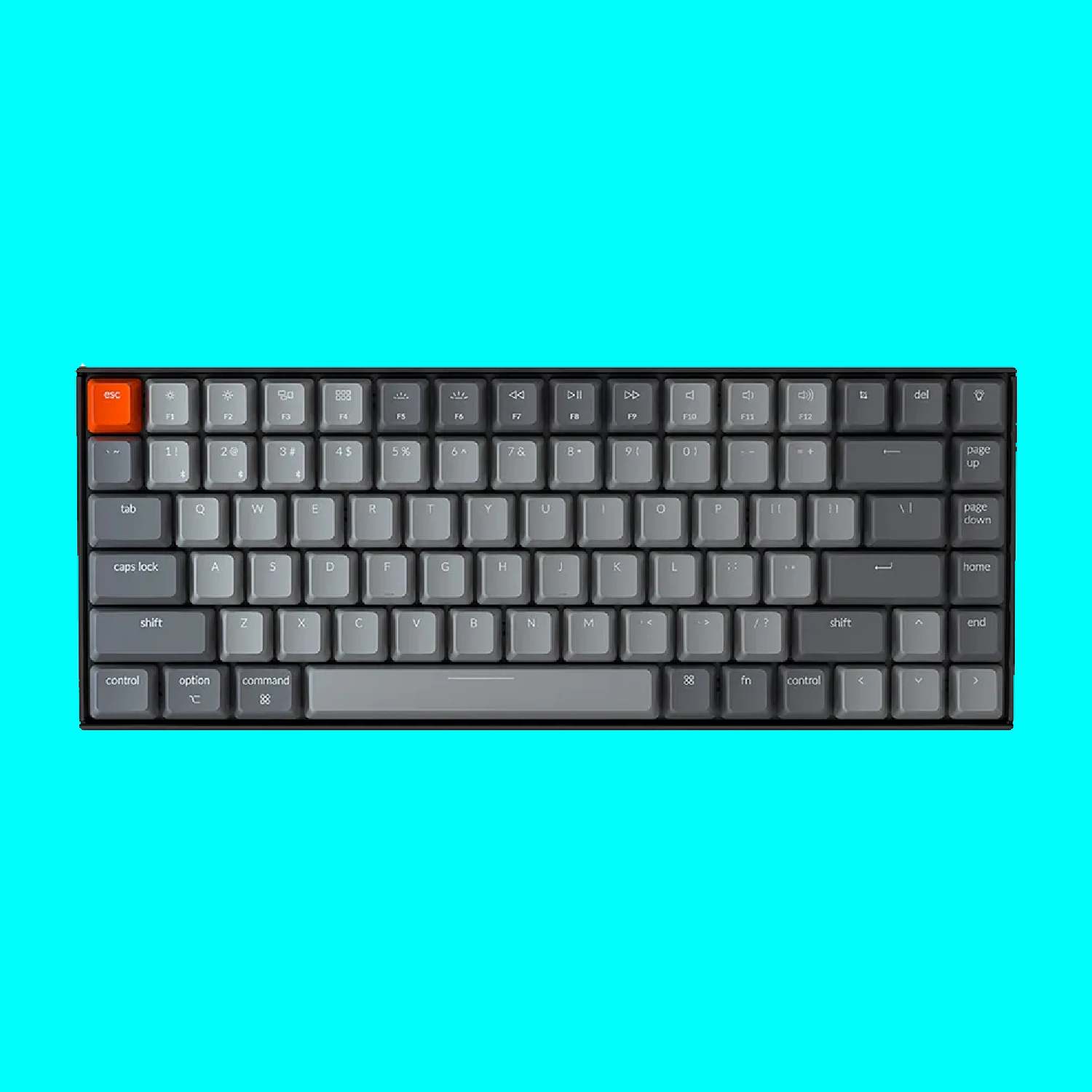
Best budget
Proving that great wireless keyboards don't need to cost the earth, the Keychron K2 is an entry-level mechanical keyboard that hits all the highlights while keeping you cable-free, and that 240 hours of battery life without the backlight is mightily impressive.
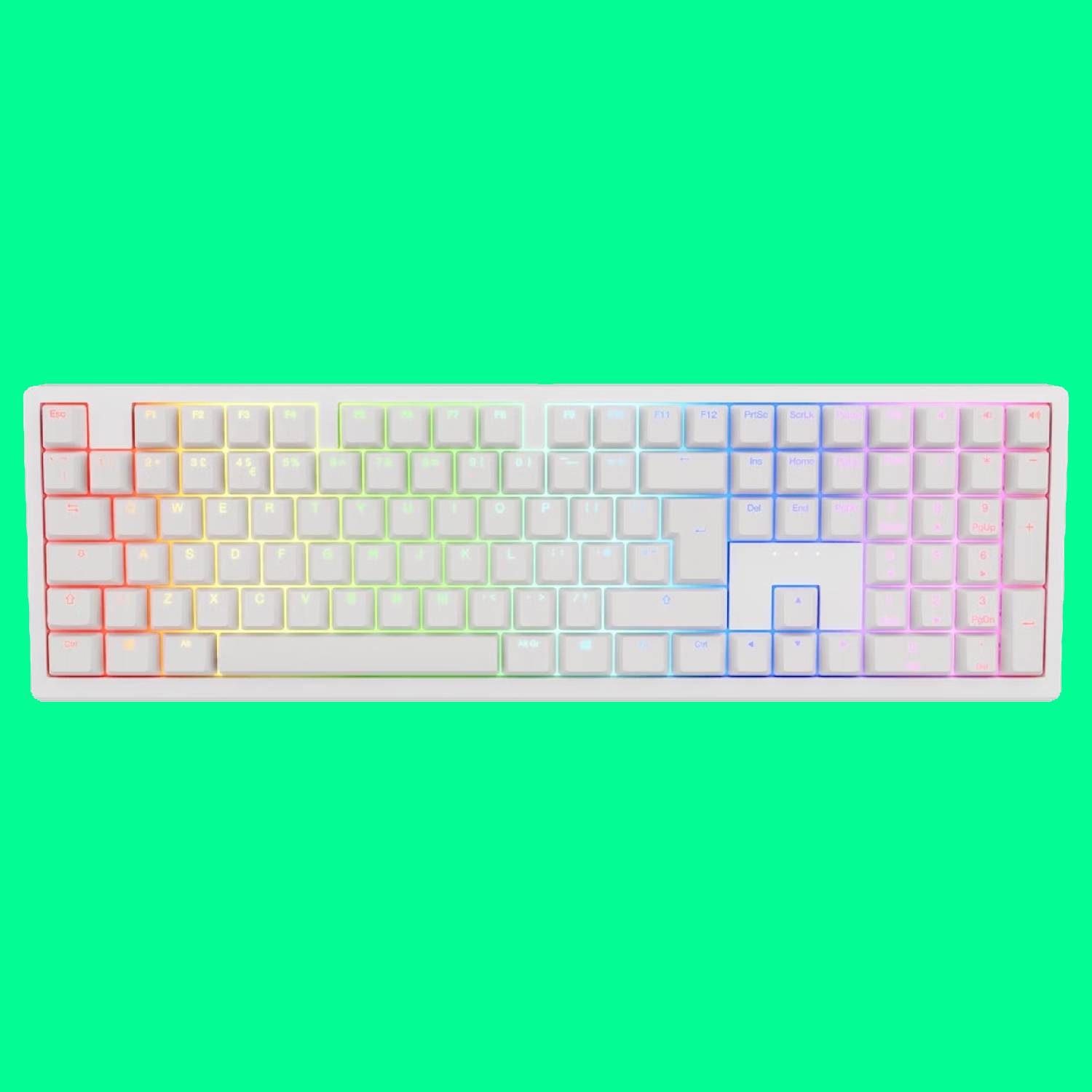
The best mid-range
This is Ducky at its value-oriented best, with a sturdy and slick keyboard. It's got nicely lubed switches, lovely textured PBT keycaps, RGB lighting that doesn't require software, and it even smushes some key zones together to save a little space.
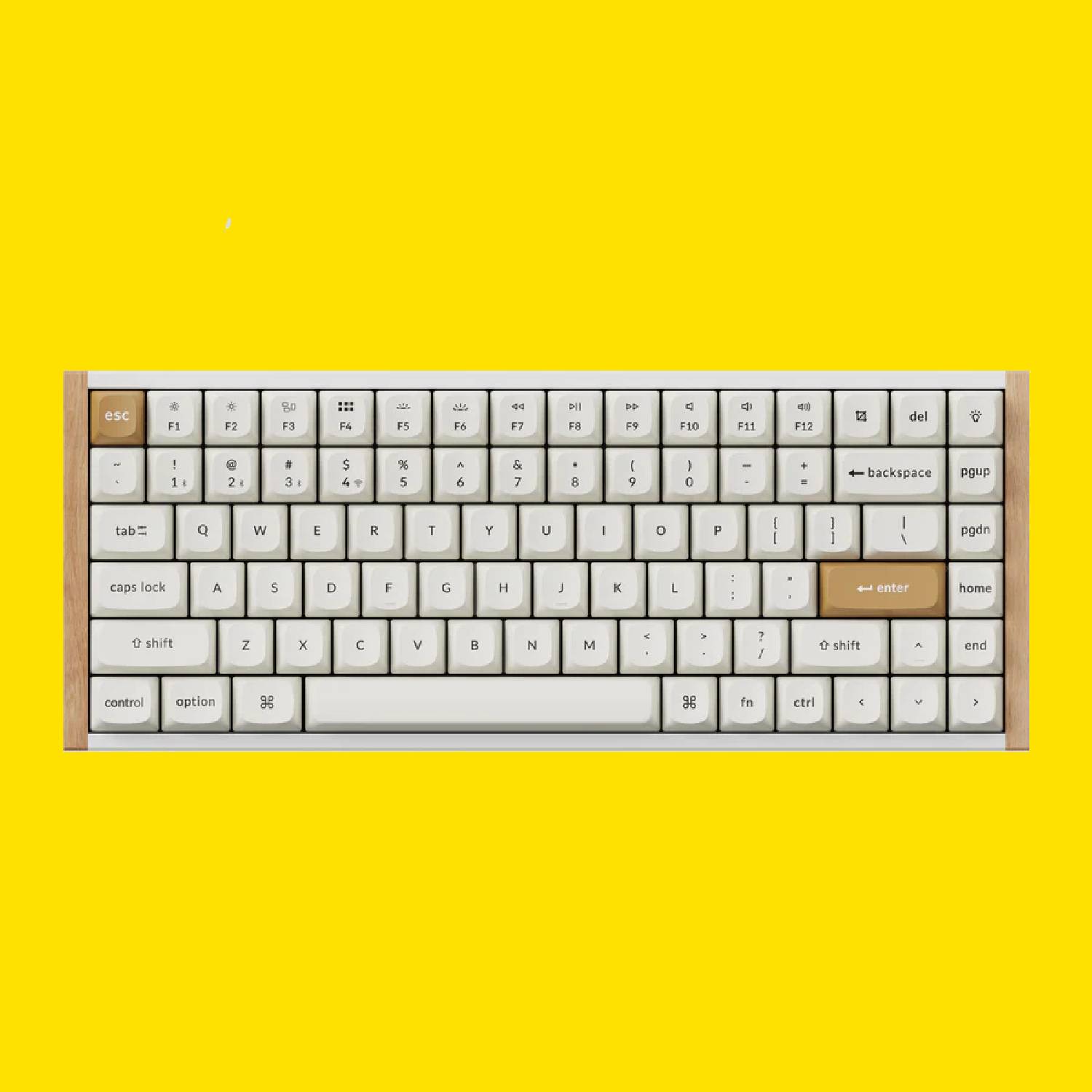
Best Hall effect
This luxurious-looking keyboard's true appeal, apart from its premium feel, is its super-responsive Hall effect switches. These allow for rapid trigger action and are ideal for snappy, competitive gaming.
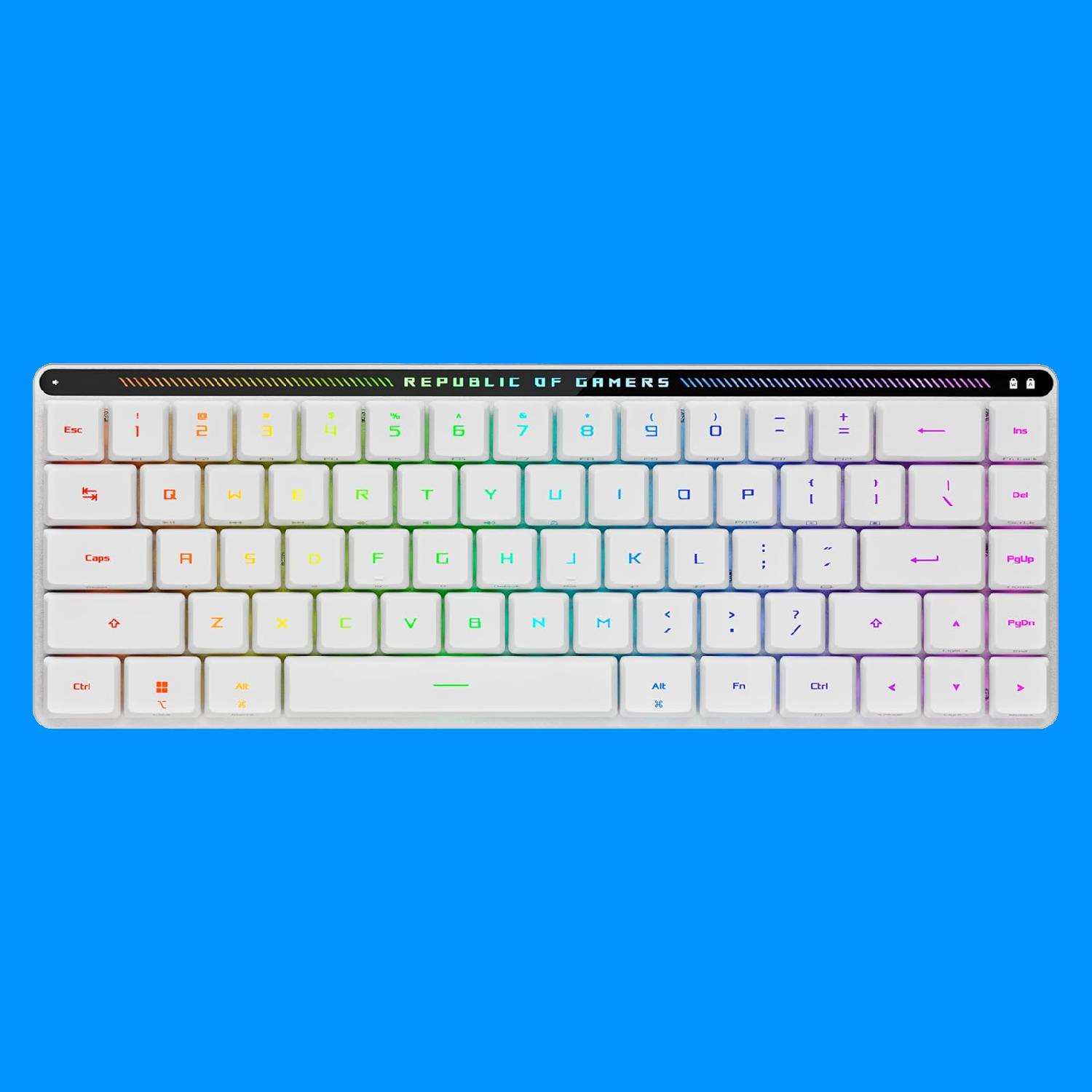
Best low-profile
Compact yet mighty, the ROG Falchion RX uses excellent lubed switches to offer a sublime typing experience across a small number of low-rise keys. Its small stature might not be for everyone, but mini keeb fans are well catered for here.

Best tenkeyless
Wireless connectivity is an added bonus for the Keychron Q3 Max. It's also our top pick for the best tenkeyless keyboard full stop, given that it's absurdly good in almost every other way, too.
⬇️ Click to load more of the best wireless gaming keyboards ⬇️
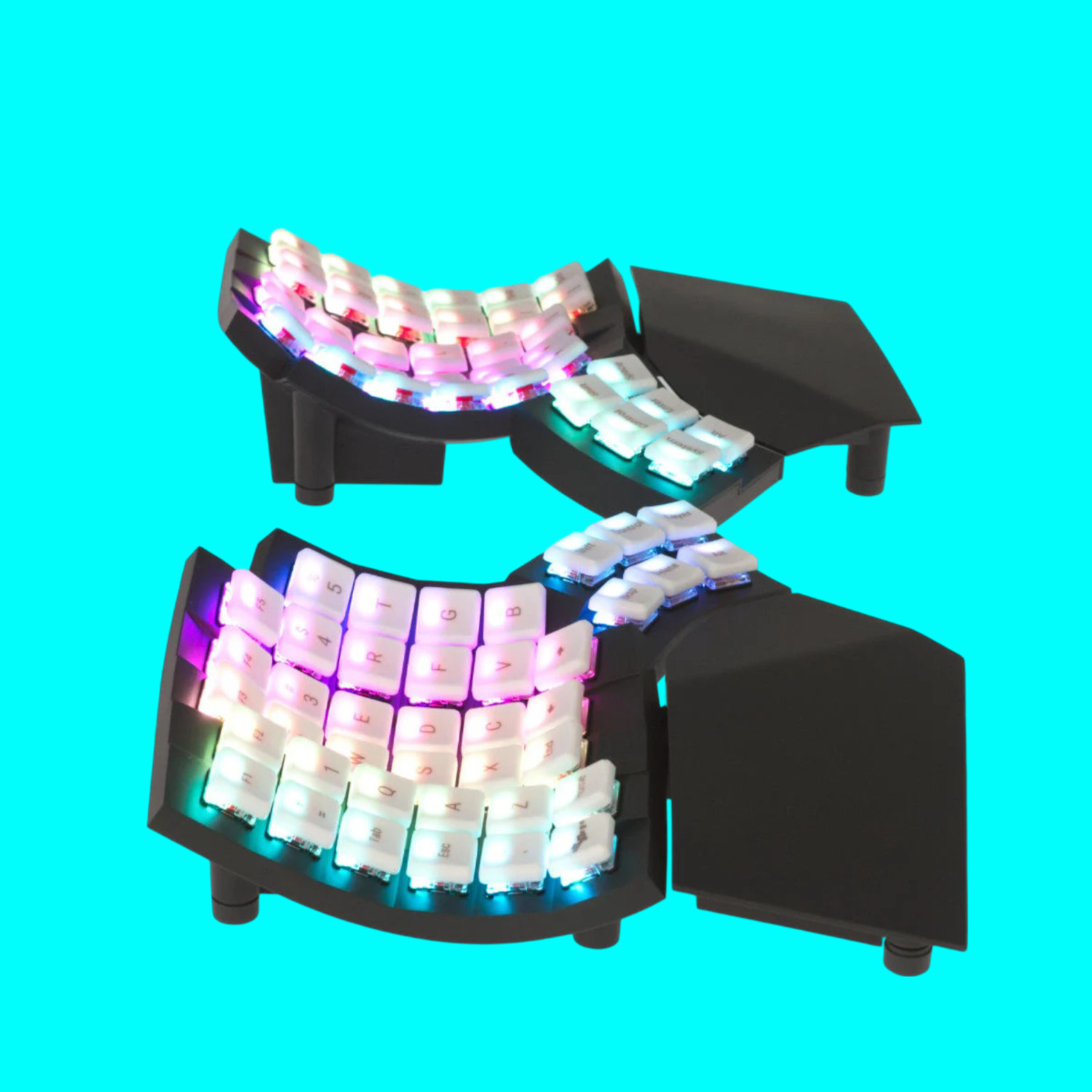
Best ergonomic
Highly portable and ergonomic, the Glove80 is sheer bliss for anyone who works all day and games all night on the same keyboard. The learning curve is as steep as the price, though.
Best wireless gaming keyboard
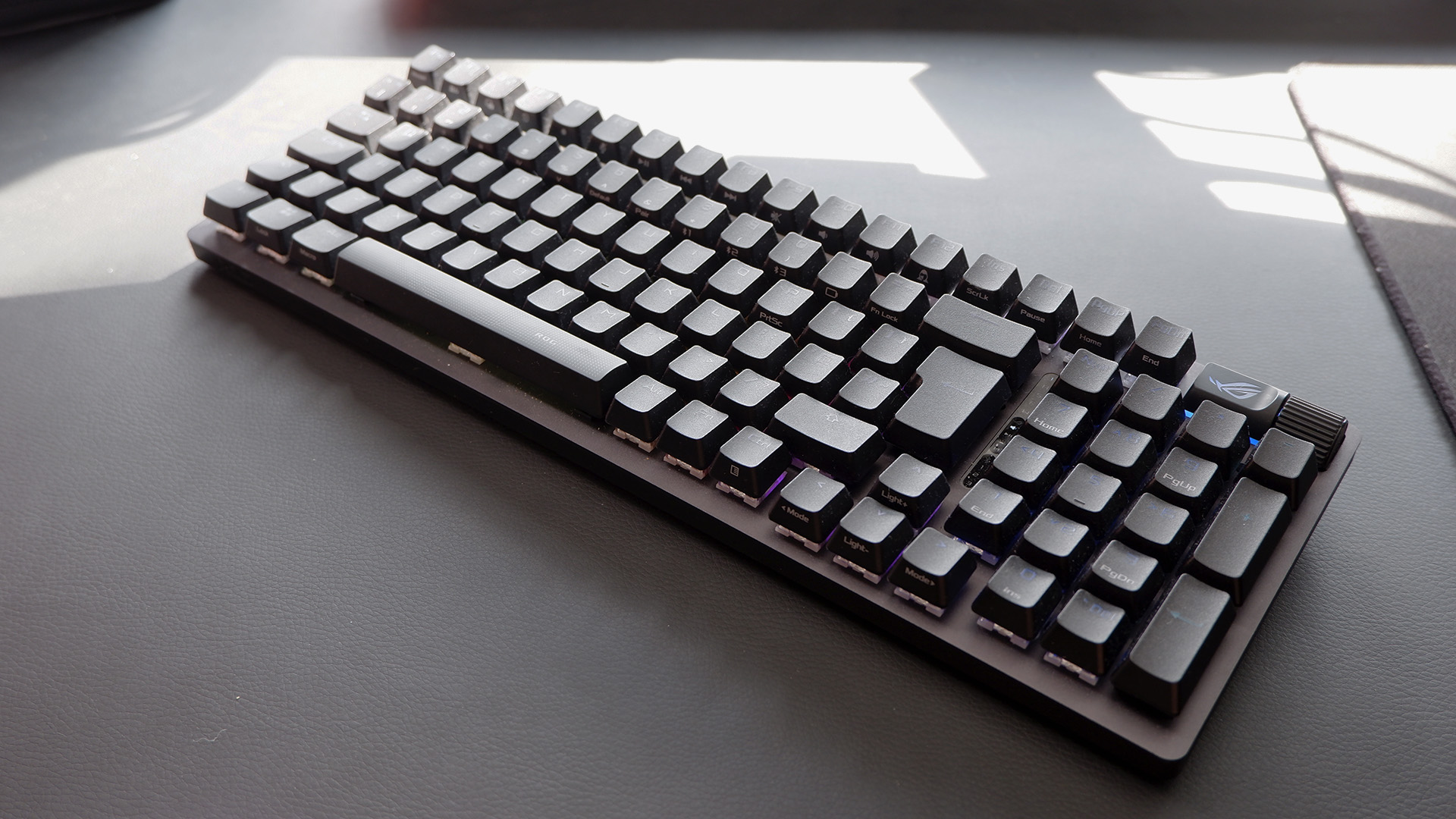
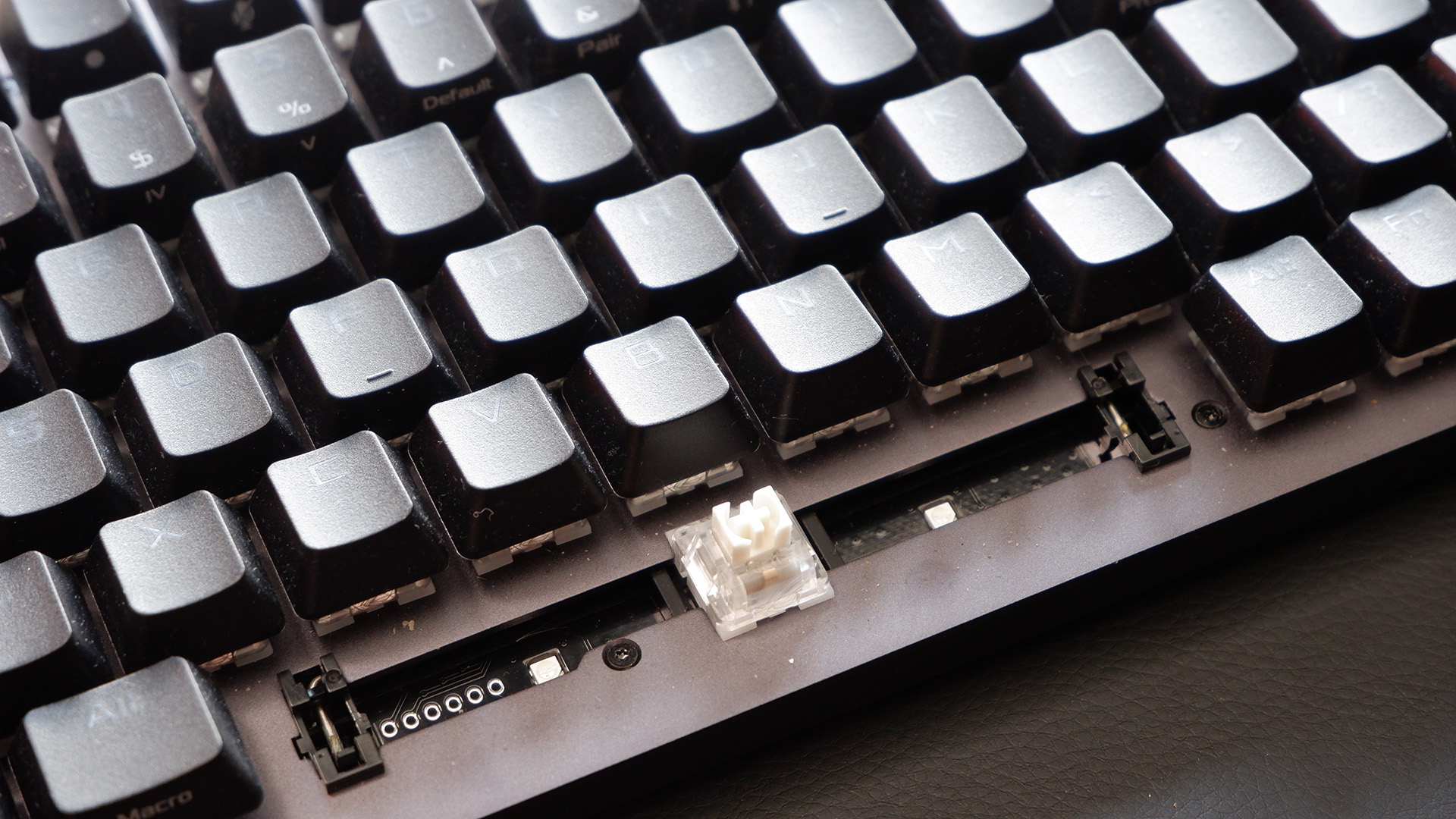


Specifications
Reasons to buy
Reasons to avoid
✅ You want the smoothest typing experience: As far as non-custom, mainstream gaming keyboards go, none can match the typing feel of the Strix Scope II 96.
❌ You want a faster polling rate: The Strix Scope II is as fast as most other wireless keyboards, but if you're an esports pro, you might want something with a higher polling rate. Maybe.
Wireless keyboards pass through our hands often, but every now and then a keyboard appears that blows us away—and the Asus ROG Strix Scope II 96 Wireless is simply the best wireless gaming keyboard we've seen in, well, forever. Actually, scrap that, it's simply the best gaming keyboard in general, but the fact that it's wireless as well is nothing but a bonus.
The typing feel is outstanding, thanks to lubed switches straight from the factory that provide a sublime typing and gaming experience right out of the box. Lubing keys is normally something reserved for people who are really, really into their keyboard feel, but Asus has deemed the process worth doing for the ROG NX switches used, and the results are extremely impressive.
More than that, the Scope II 96 is quiet by mechanical keyboard standards, thanks to some sound-dampening foam, a choice of PBT or ABS plastic keycaps, and some sturdy stabilisers for the larger keys. Mechanical keyboards can be something of a headache when it comes to noise, but the Scope II 96 really is noticeably quieter than the competition.
The switches themselves are hot-swappable, for those of you who like to experiment with a different feel—although we found the feel of the ROG NX Snow switches in our review model to be so good it's unlikely you'll want to.
Beyond the typing experience, the compact frame is both well-built and well-thought-out, with a full numpad and a programmable multimedia wheel. Software-wise, the ROG Strix II uses Asus' Armoury Crate, and while we're not huge fans, it does at least allow you to set up things like macros and RGB lighting customisations fairly easily.
The battery life is also excellent, with a quoted maximum of 1,500 hours of continuous use, and we found we only had to plug it in once during our testing. There's also a Bluetooth mode activated by a toggle on the rear of the board, which is an extra party trick that may well come in handy for some.
Ultimately, it's the mechanics of the Scope II 96 that really make it stand out apart from the pack, and even though you'd struggle to call it cheap, at an MSRP of $180/£170 it's still a fair bit less than its most immediate competition like the Corsair K70 Max.
What you're getting here is a wireless keyboard with virtually no compromises, and a user experience that's second to none, and that means it has to top the list of our best wireless keyboards—and may well do for some time.
Read our full Asus ROG Strix Scope II 96 Wireless review.
Best budget wireless gaming keyboard
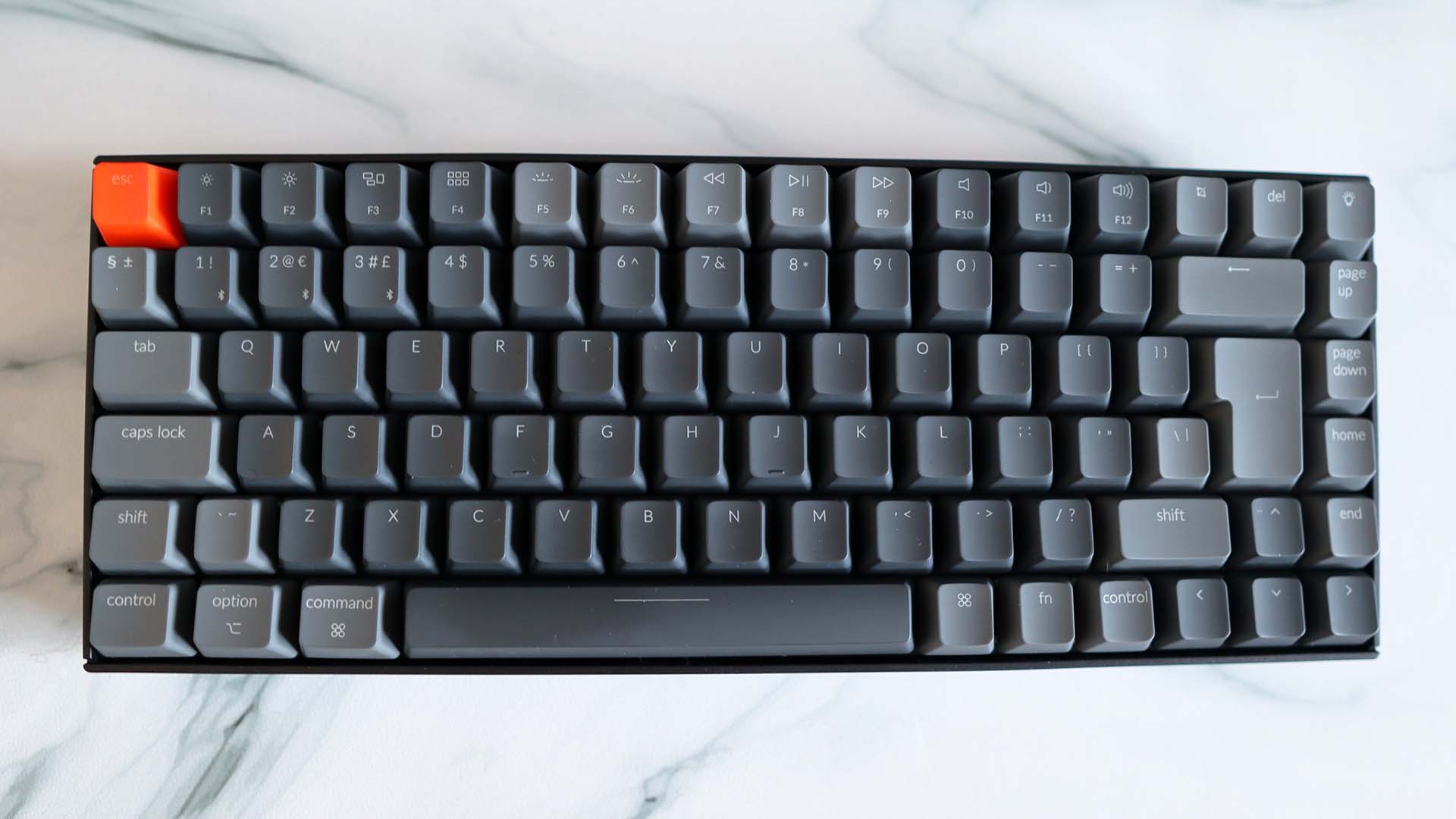
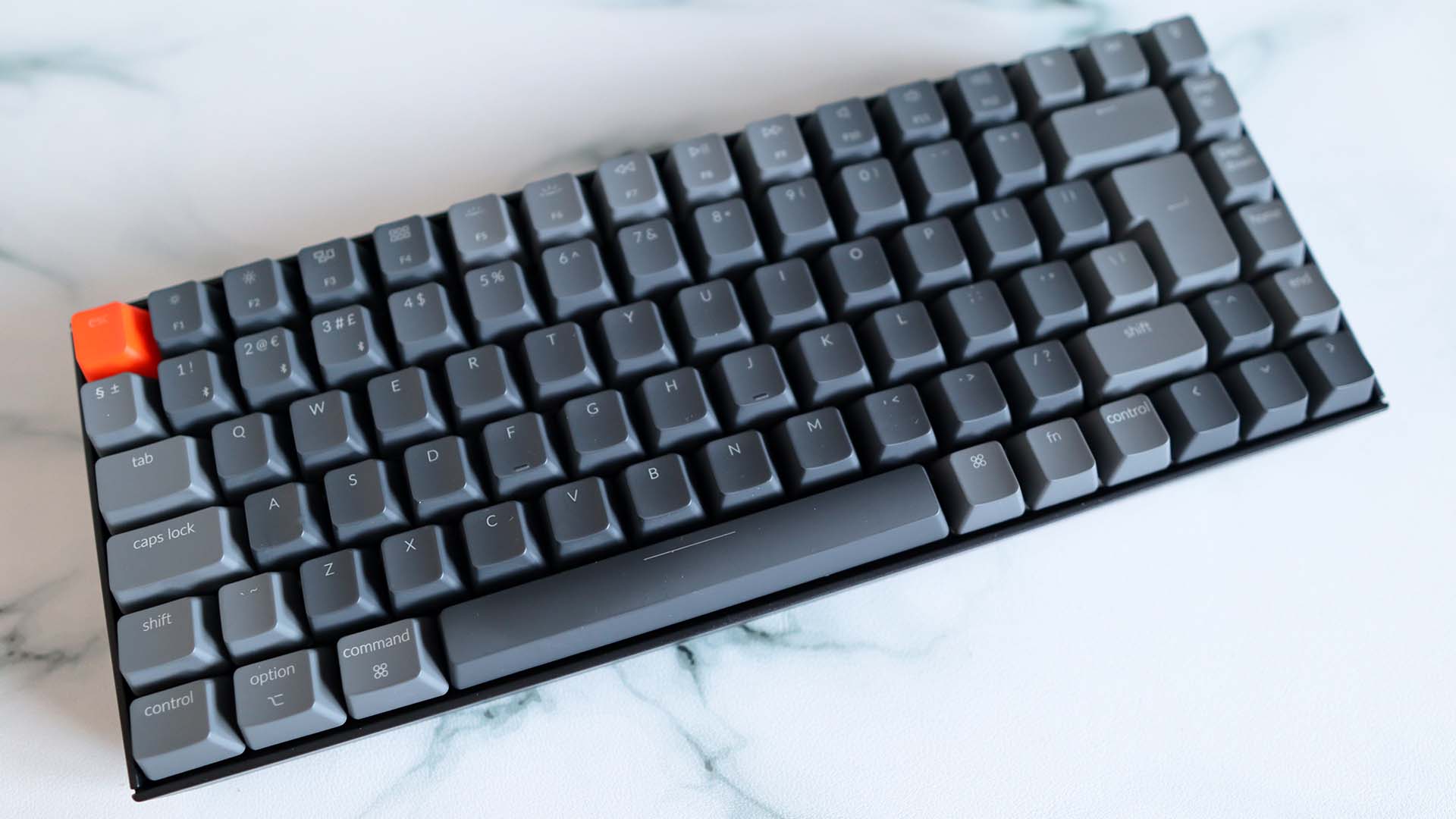

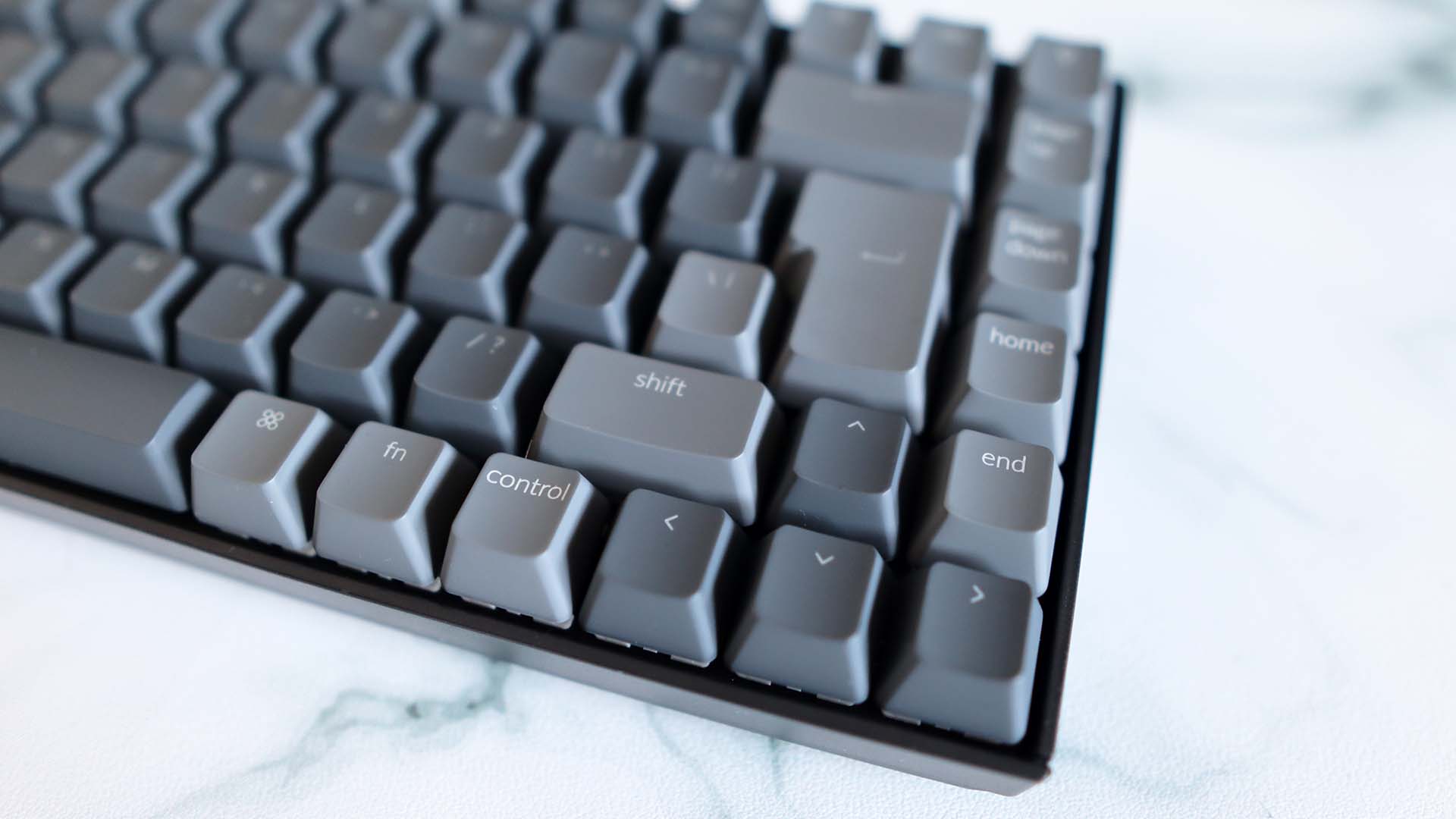
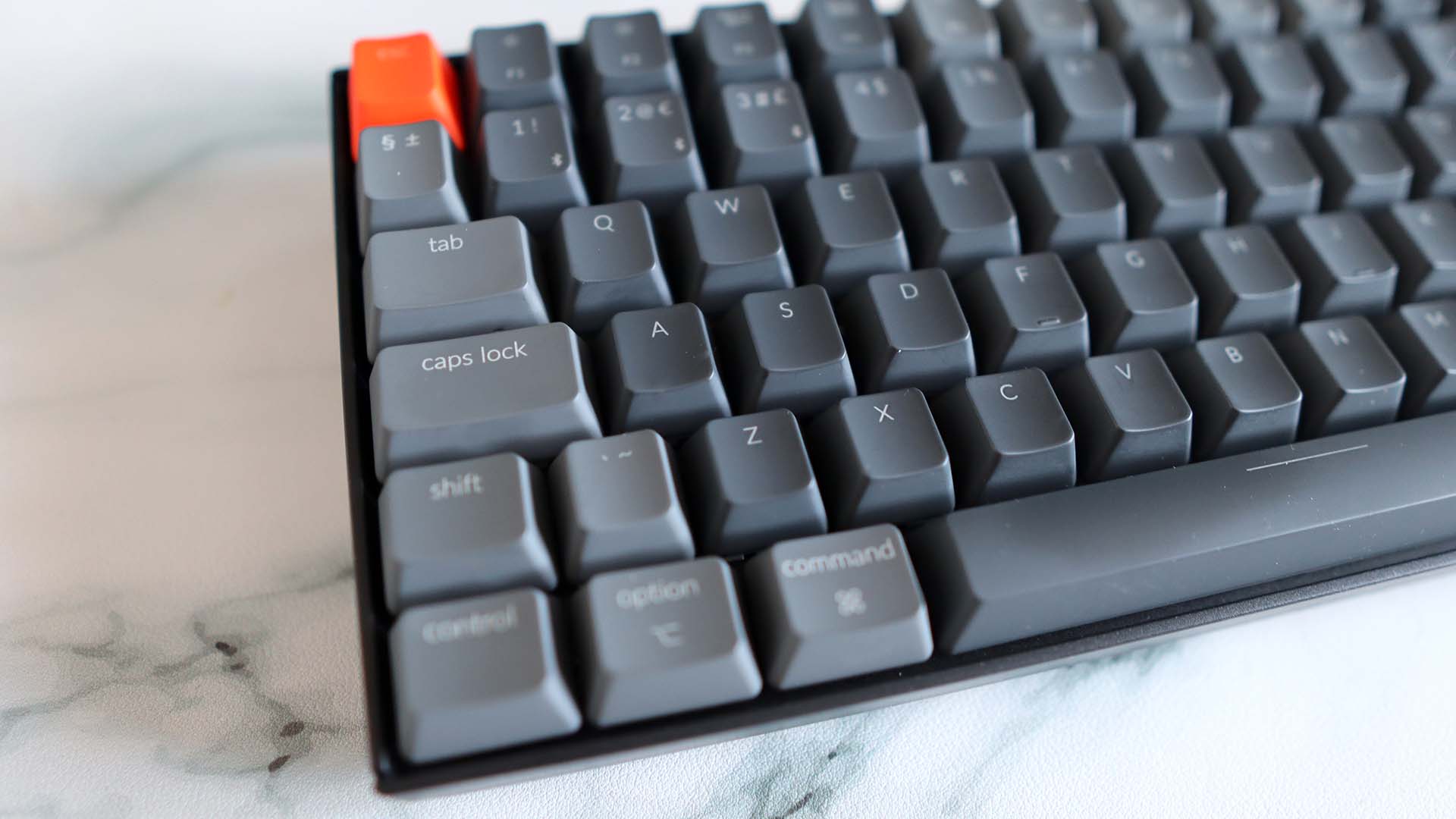
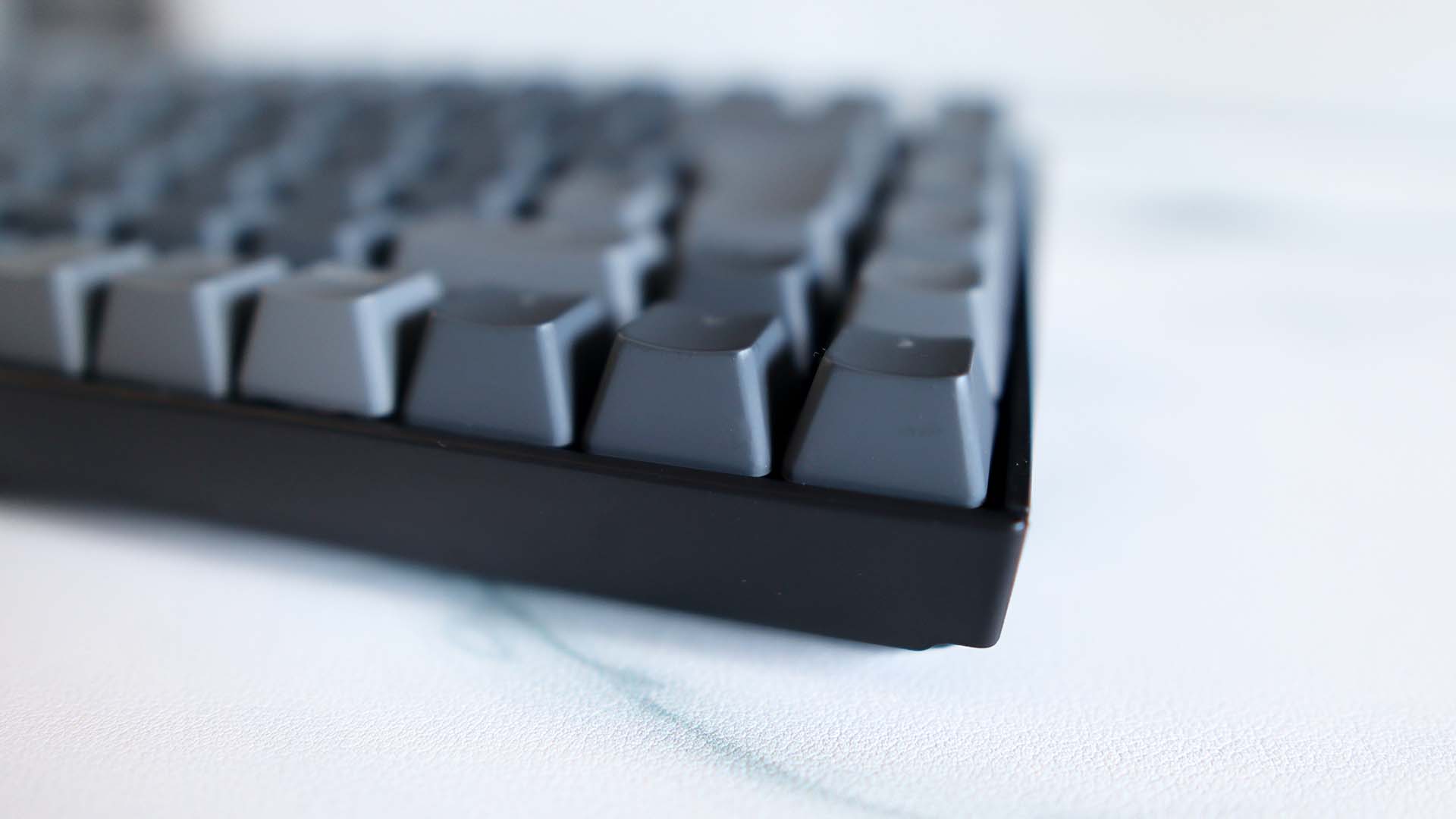
Specifications
Reasons to buy
Reasons to avoid
✅ You need wireless connectivity on a budget: A cheap wireless gaming keyboard is hard to come by, or at least one that's any good. The Keychron offers a lot of value for money.
❌ You can take or leave wireless: You could get a better all-around keyboard with nicer switches or RGB lighting, whichever you prefer, if you ditched the wireless connectivity. But you're reading this, so let's assume you want cable-free operation above all.
The Keychron K2 redefines affordability, which makes it the best budget wireless gaming keyboard. It starts out at just $69/£69 and you get a decent-sized gaming keyboard with great wireless functionality and Gateron mechanical switches.
You may think that for this sort of price, you're going to have to make major sacrifices. Maybe even ditch mechanical switches. But you don't. The Keychron K2 offers swathes of features that are more likely found on pricier boards, including both Wi-Fi and Bluetooth connectivity and simple swapping between Windows and macOS.
There are a few Gateron switches to choose from. Your usual fare of linear, clicky, or tactile. We have tactile Gateron switches in our review unit, which are unspectacular and quite pingy on the enter and backspace keys, but otherwise pleasant enough to use for both typing and gaming.
The battery life is rated to a lengthy 240 hours with the backlighting off, and you might not mind keeping it disabled during the day. With the cheapest board offering only white LED backlighting, it's purely a useful feature for low-light situations. Like writing your horror novel in the dark.
All that being said, what you get here is a wireless keyboard with a better typing feel than most, some usable backlighting, and from a trusted brand for less than the competition. You simply get a lot for your money with the Keychron K2, and when it comes to wireless gaming keyboards that often cost a lot of cash, that sort of saving goes a long way.
Read our full Keychron K2 review.
The best mid-range wireless gaming keyboard
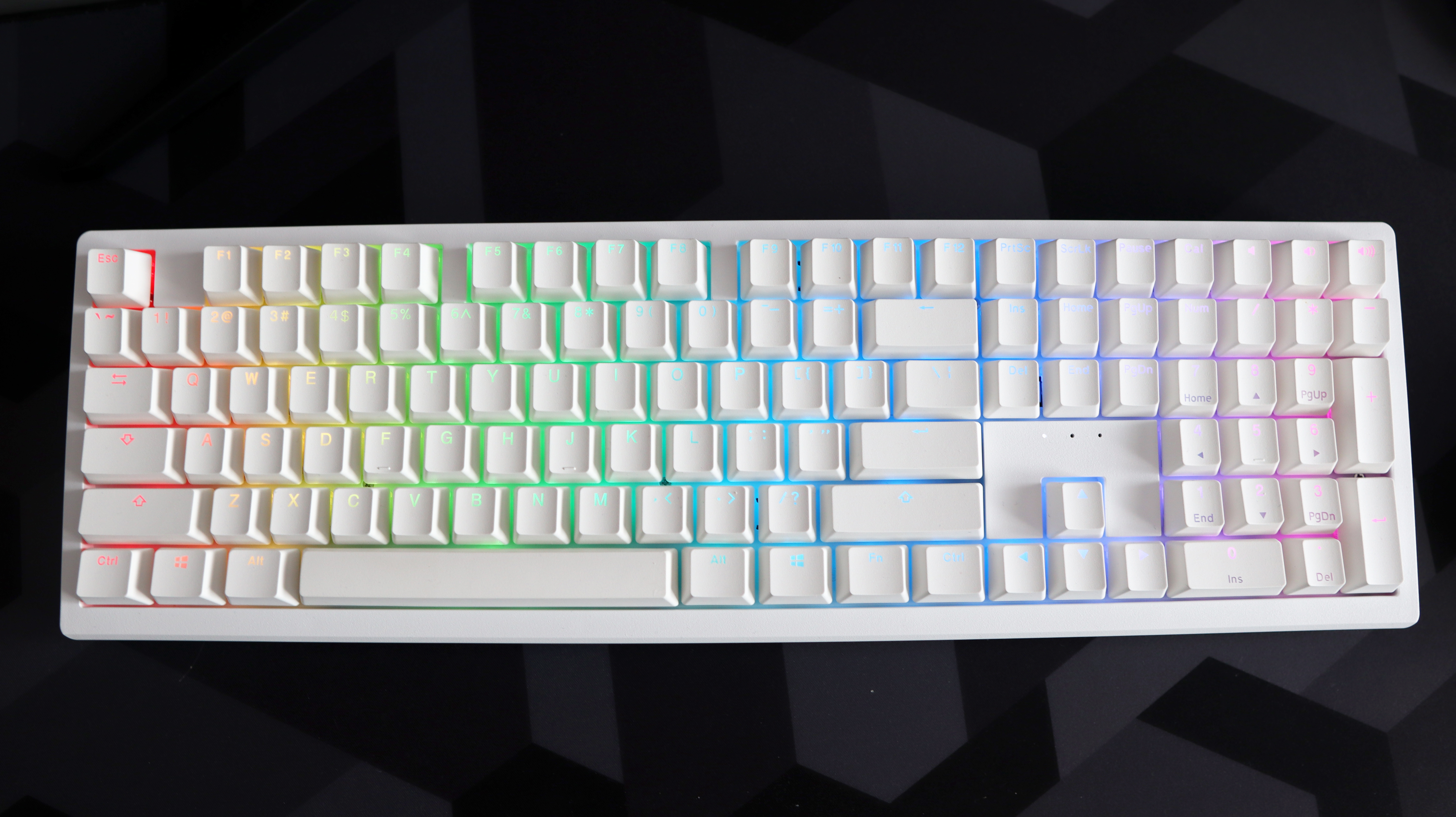
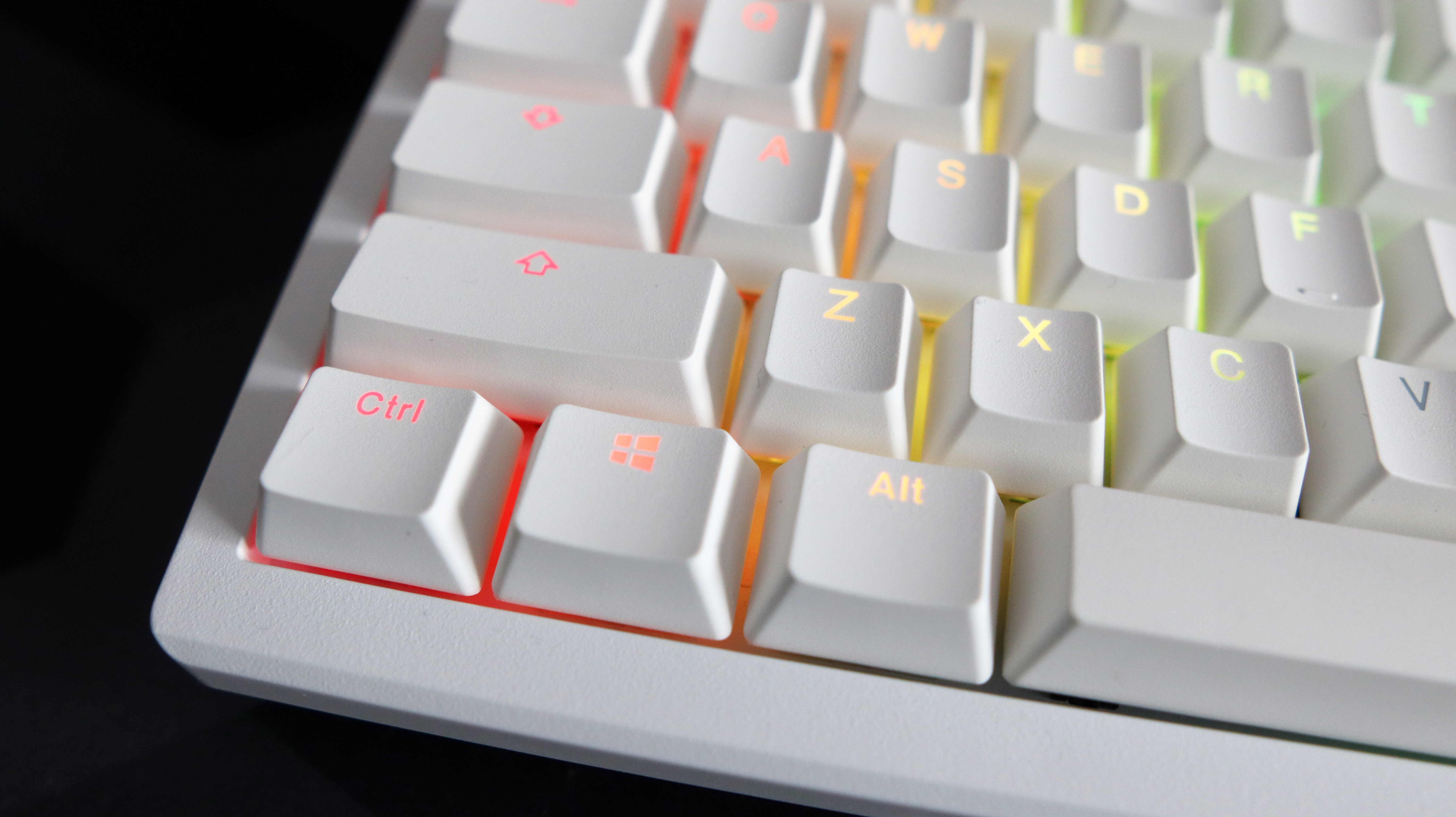

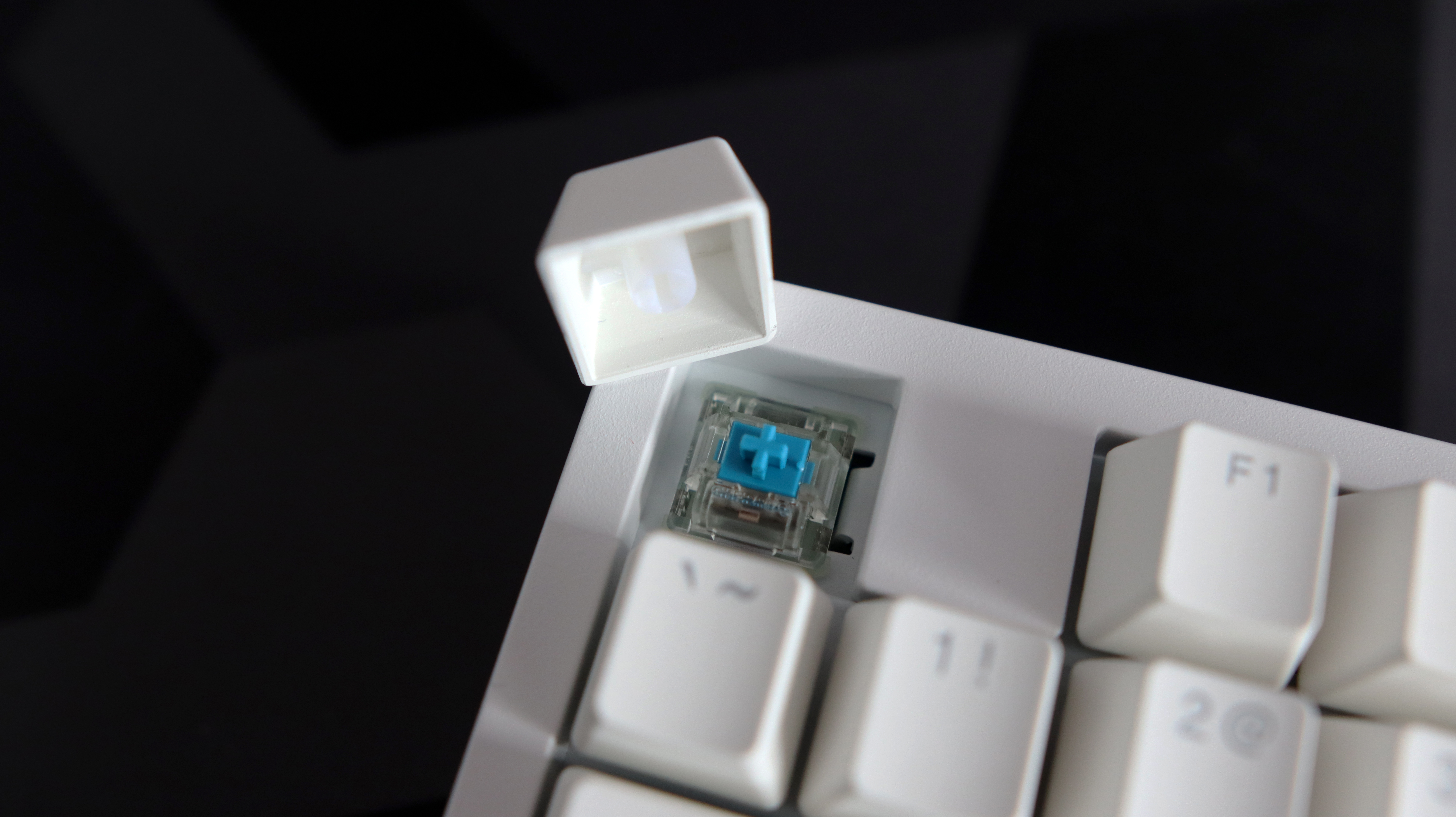
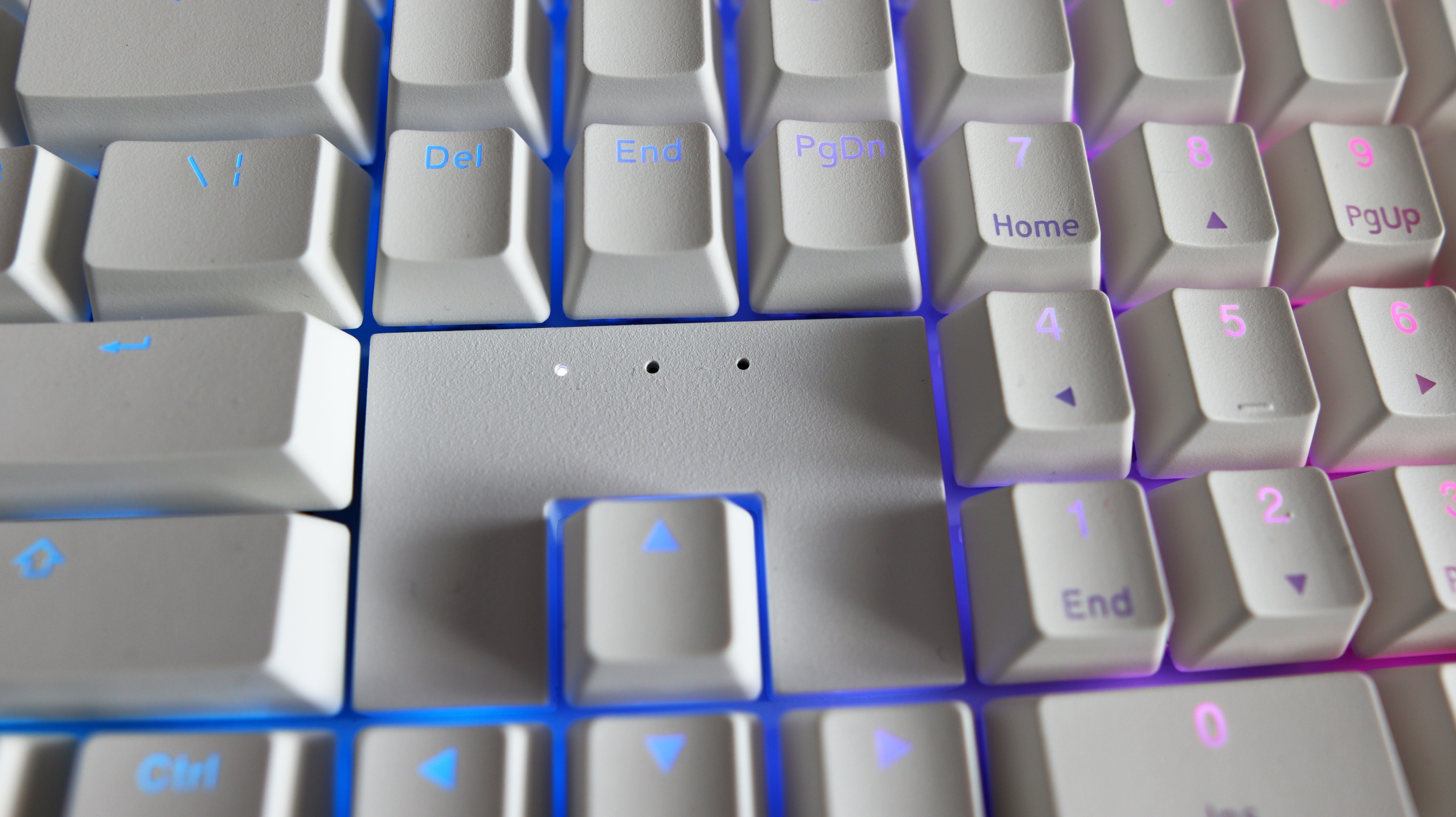
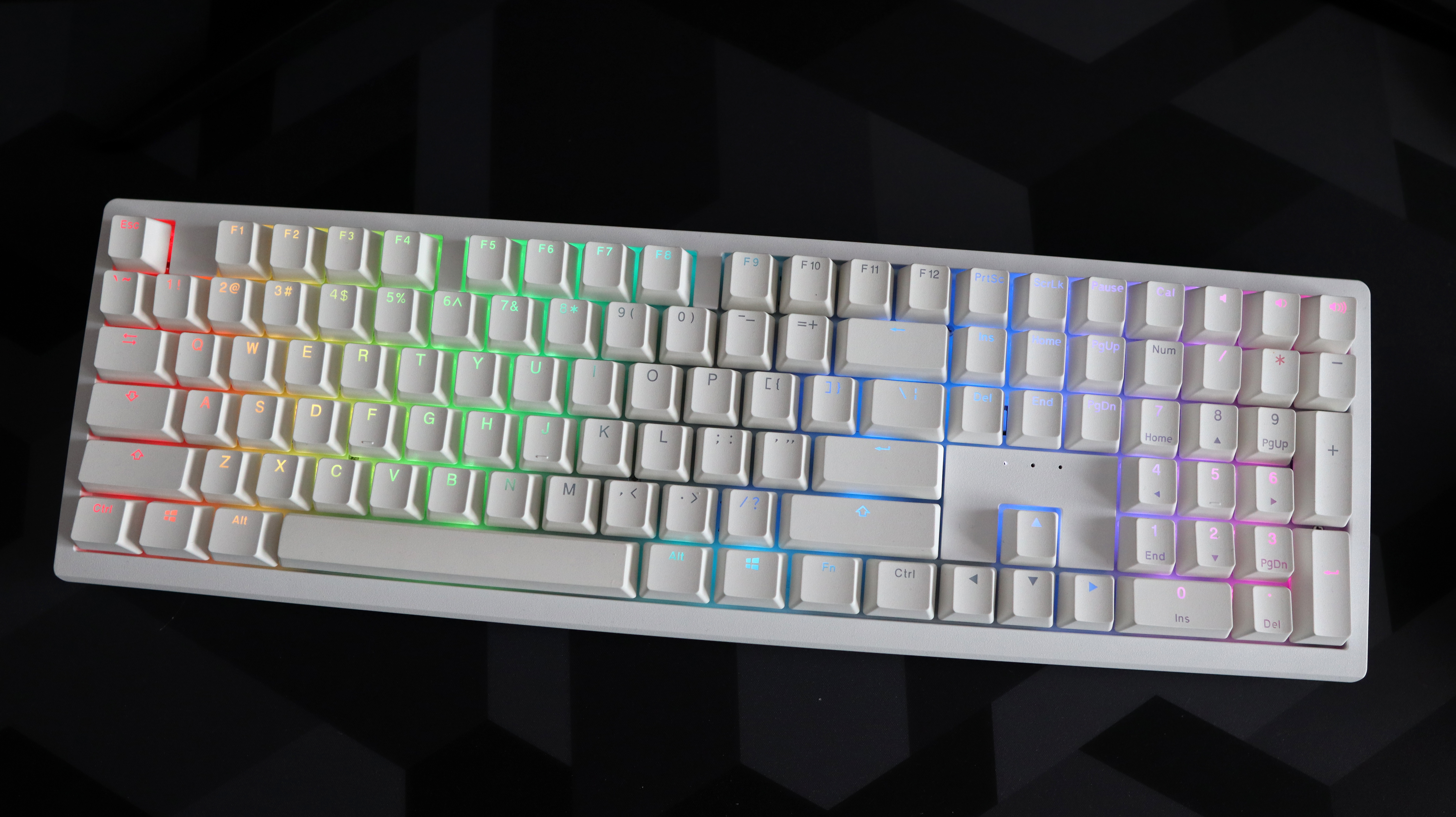
Specifications
Reasons to buy
Reasons to avoid
✅ You want a nice typing experience: The Zero 6108 features Cherry's new MX2A switches, which are improved for typing feel, and it has lovely textured PBT keycaps that feel great to type on.
❌ You want long battery life: This keyboard isn't awful on the battery life front, but offering just 18 hours with RGB lighting enabled, there are certainly better options out there.
The Ducky Zero 6108 is the best mid-range wireless gaming keyboard, and just the fact that I can say all those words in the same sentence is somewhat of a miracle. For the longest time, 'wireless' has been synonymous with 'expensive', but we're finally starting to see some wireless gaming keyboards that don't require emptying the bank account. Case and point, this Zero 6108.
Let's start with the obvious: Ducky is very well-known in the world of mechanical keyboards, and for good reason. Its products have historically tended to be long-lasting, sturdy, and high quality, and that certainly tracks with the Zero 6108. Although the 6108's chassis is plastic, it's a very sturdy board and comes with all the hallmarks of quality, such as PBT double-shot keycaps, pre-lubed Cherry MX2A switches (barring the non-lubed Blue version), and per-key RGB lighting.
The typing experience is lovely in part thanks to those PBT keycaps. These are lightly textured, and our Reece found them to be comfortable to type on compared to smoother ABS choices.
It's a full-sized board, too, so don't worry about running out of keys, although it looks a little different to most other full-sized boards because the key groupings are mushed together a little to save space (it's still a big keyboard compared to actual 80% or TKL options, though). You even get a few media keys to work with and a few on-keyboard (read: no software required) RGB lighting controls.
Battery life is nothing to write home about—18 hours with RGB enabled, or 138 hours with lighting off over Bluetooth—but it's enough to keep you going for a couple of days with RGB enabled.
Then, of course, there's the fact that it's wireless, which is fantastic for its circa $100 price point. Admittedly, many of you will probably just keep it plugged in anyway, but it's not just a fast 2.4 GHz connection that this thing offers, but Bluetooth, too. Which is great for connecting on the go, or to new devices you bring to your desk.
In other words, then, you're getting a pretty solid all-around package with the Ducky Zero 6108, at a very enticing mid-range price point.
Read our full Ducky Zero 6108 review.
Best Hall effect wireless gaming keyboard
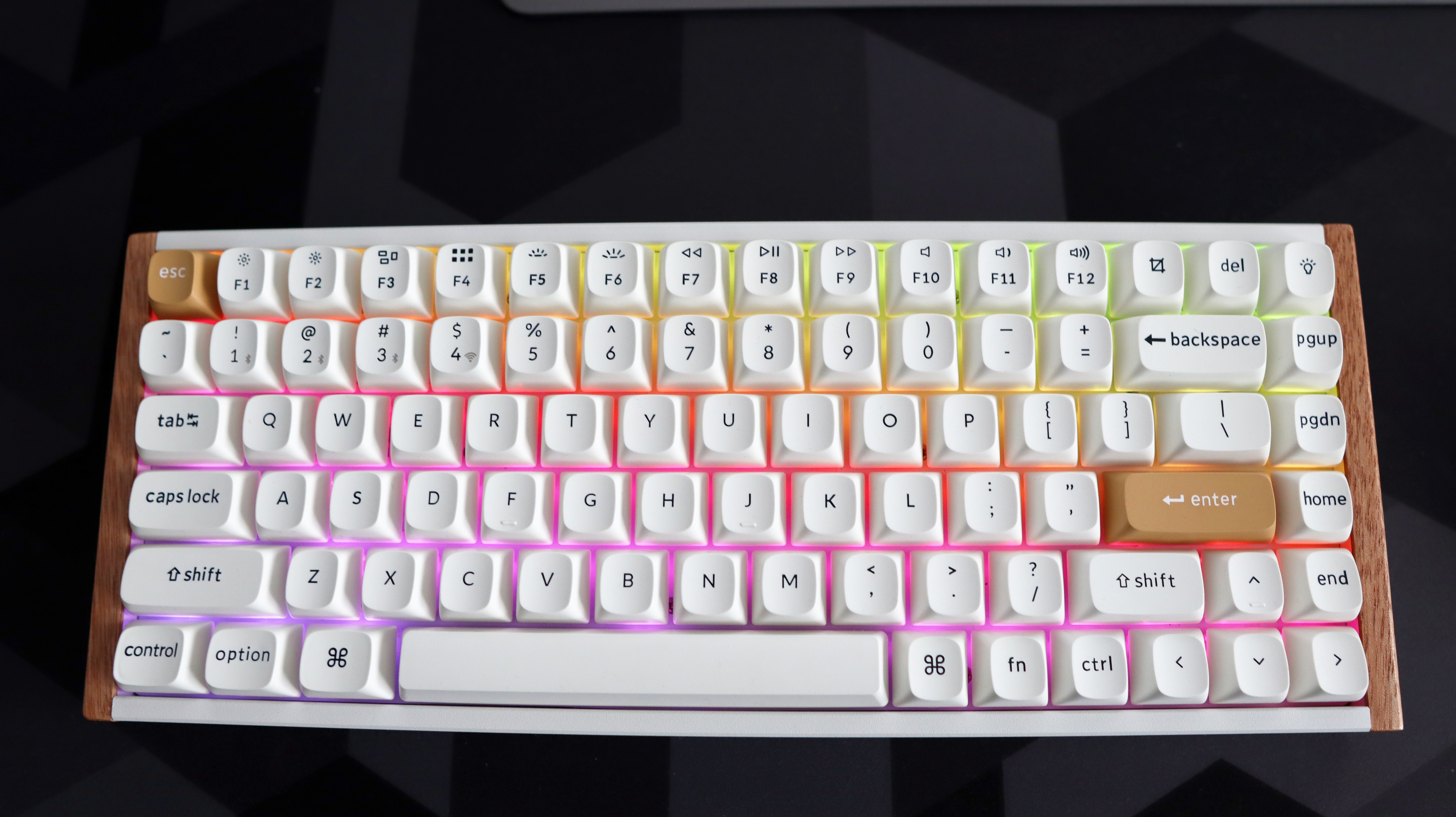
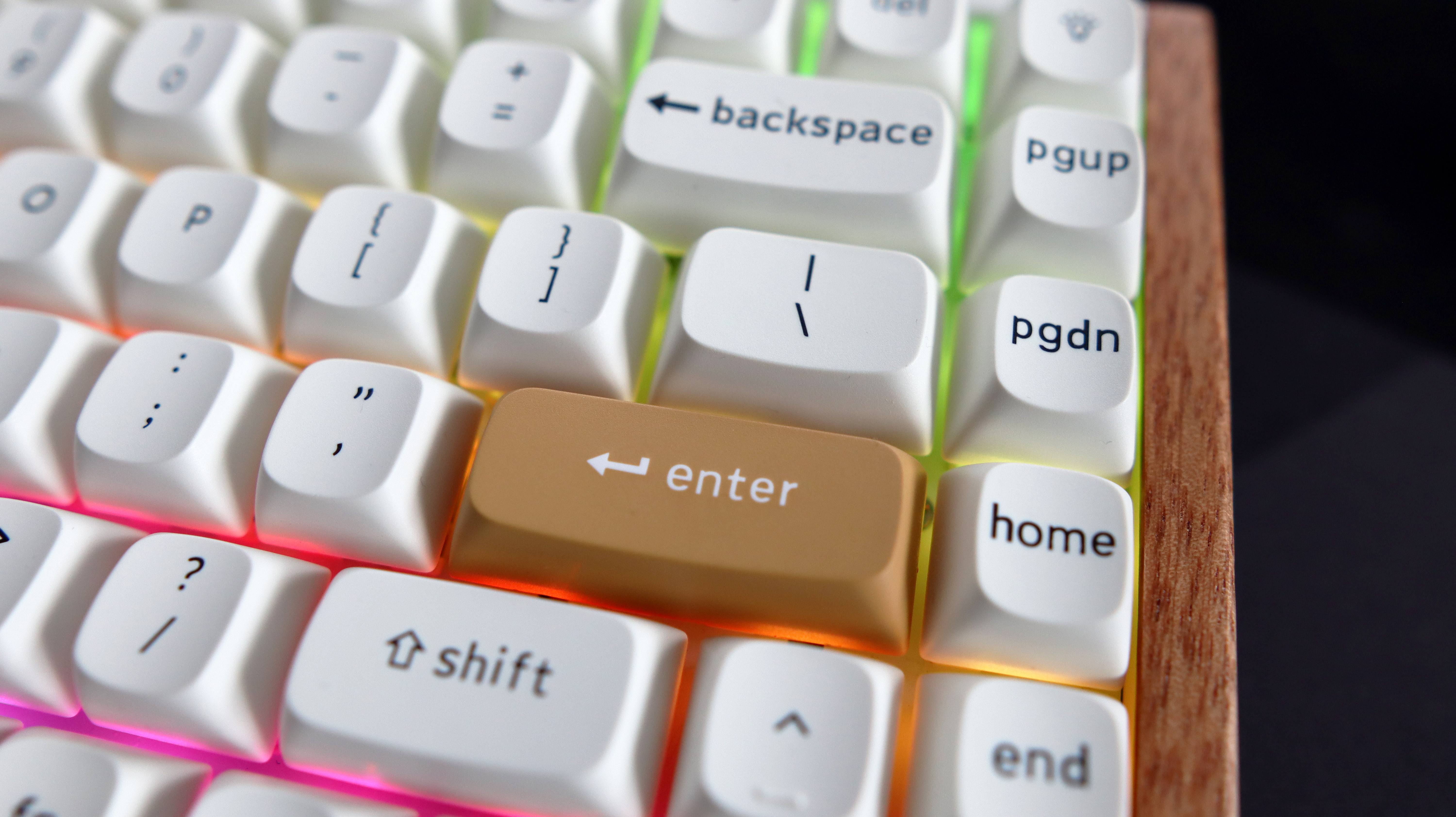
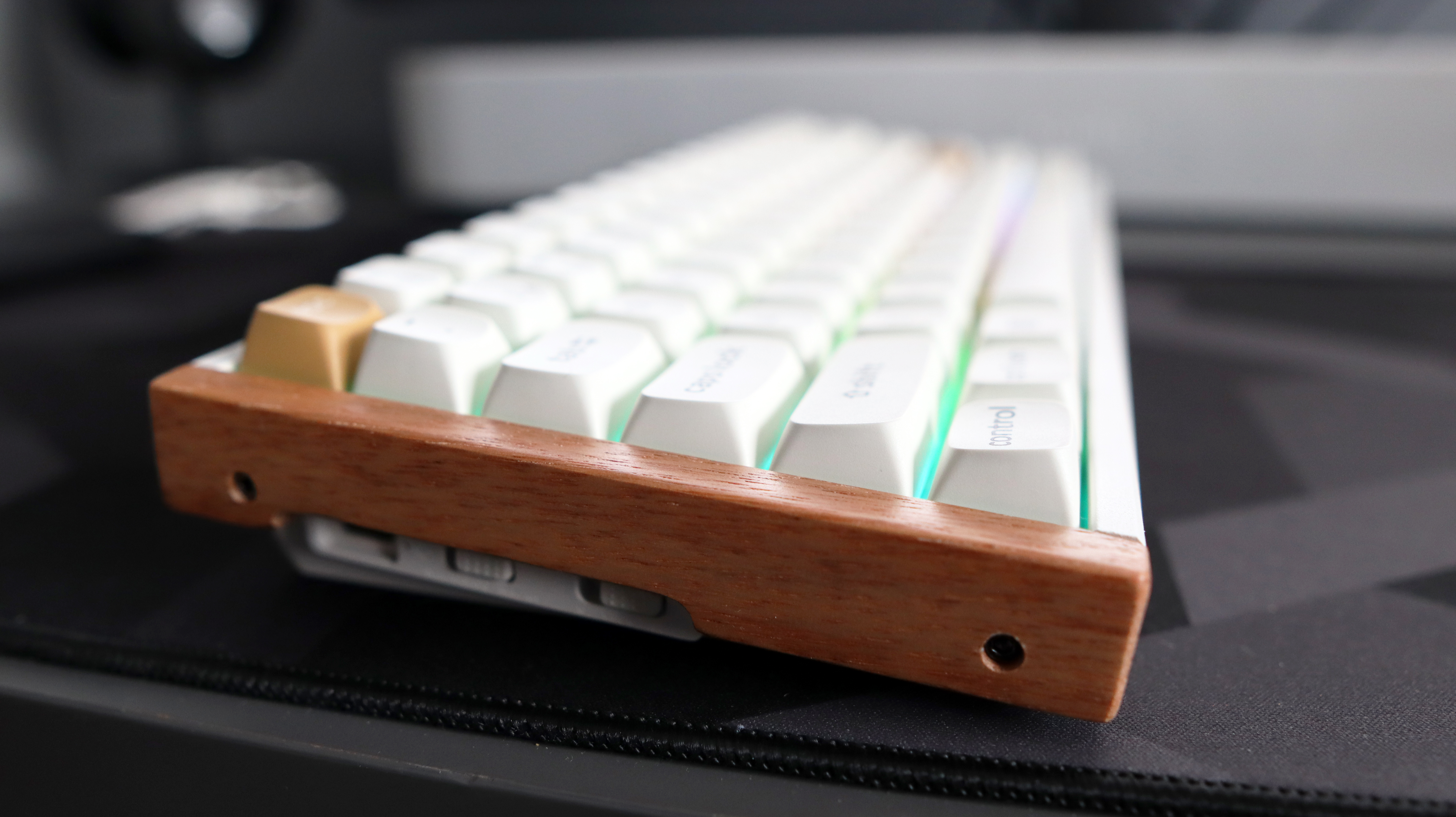
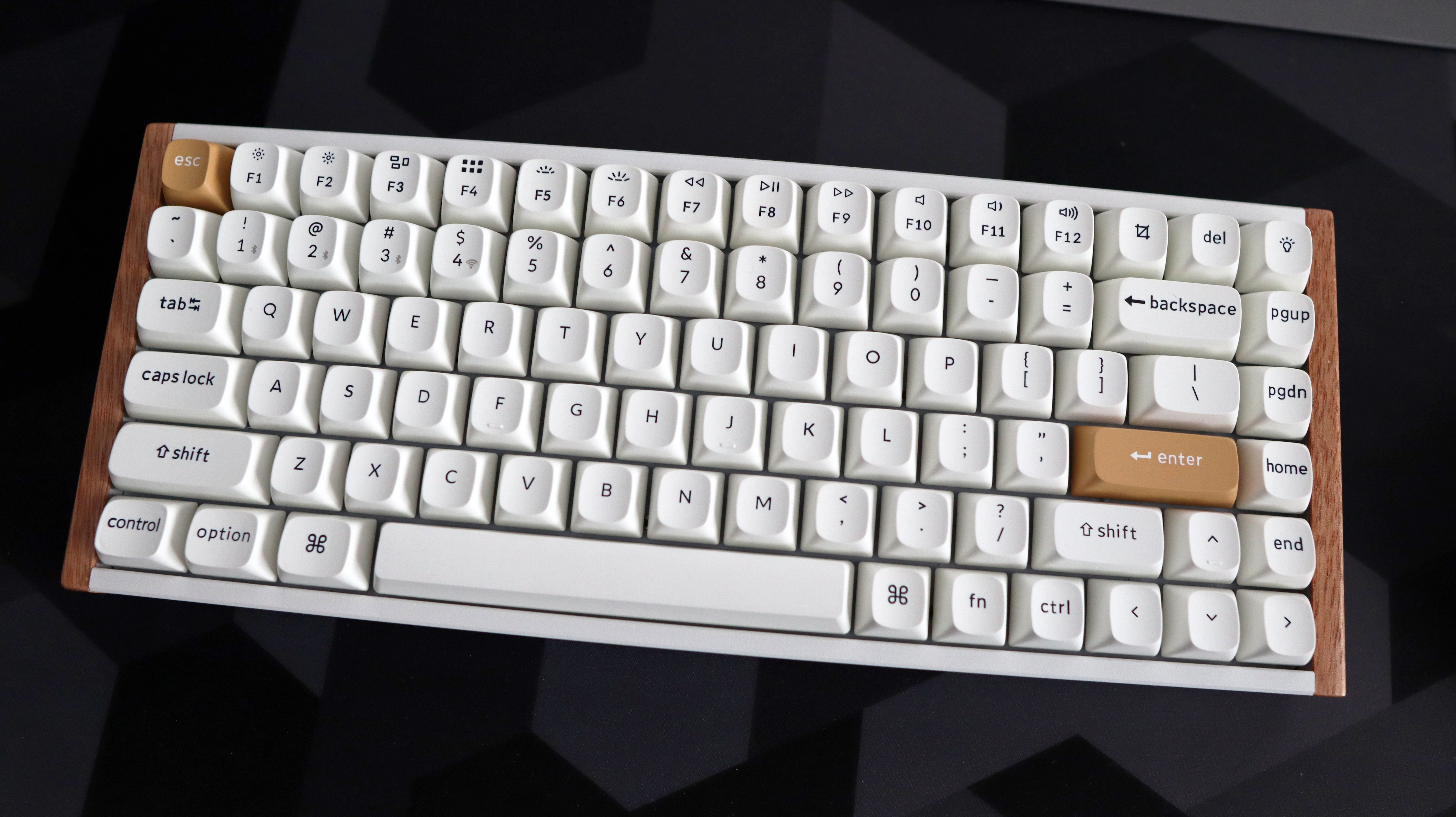

Specifications
Reasons to buy
Reasons to avoid
✅ You play competitive shooters: This keyboard's Hall effect switches allow for 'rapid trigger' actuation, which is great for the fast, responsive gameplay of competitive shooters.
❌ You want lots of RGB options: While this keyboard has RGB lighting, you can only choose from a handful of preset effects.
The Keychron K2 HE is the best wireless Hall effect keyboard not just because it packages the latest and greatest mechanical switch tech for gaming in a rather suave, premium-feeling package, but also because it offers this for cheap. In a world where Hall effect keyboards are usually $200 or higher, this $140, 75% layout, Bluetooth, and 2.4 GHz wireless keyboard is a great value proposition.
But let's start with the Hall effect switch technology acting as a foundation for this board. These switches house a small magnet which affects the sensor at the base, on the PCB, causing a voltage or a change in voltage—to what extent the voltage is caused or affected can represent how close or how far away the magnet is, and therefore how far the key has been pressed. This means you can set the switch's trigger point to wherever you like, including high up for a light-touch gaming keyboard.
With the K2 HE, you can even change at which point each individual key activates, so if you want a faster response from the WASD keys, for instance, but slower response from the number keys, it'll do that just fine. And you can enable 'rapid trigger', which allows you to re-actuate keys as soon as you let off pressing them, enabling more (you guessed it) rapid keypresses.
Apart from this Hall effect tech, the elephant in this keyboard's room, if you've seen the above images, will be the wooden panelling on the side of the keyboard, which gives it a rather luxurious look. That's found only on the special edition, but the keyboard looks plenty nice without.
Its good looks carry across to feel, too, because the Keychron K2 HE features double-shot PBT keycaps, heavy casing, and lubed Gateron double rail switches. All this makes for a sturdy, creamy-sounding keyboard.
The software is another boon for the K2 HE, too, as with any Keychron keyboard. It's browser-based, so no need to bloat your PC with yet another piece of peripheral software, and everything is incredibly easy to adjust and configure.
The fact that all this is offered for such a reasonable price is what makes the Keychron K2 HE, without a doubt, the best wireless Hall effect keyboard on the market right now. If you want the best that modern switch technology has to offer for competitive gaming, this keyboard will do it.
Read our full Keychron K2 HE review.
Best low-profile wireless gaming keyboard
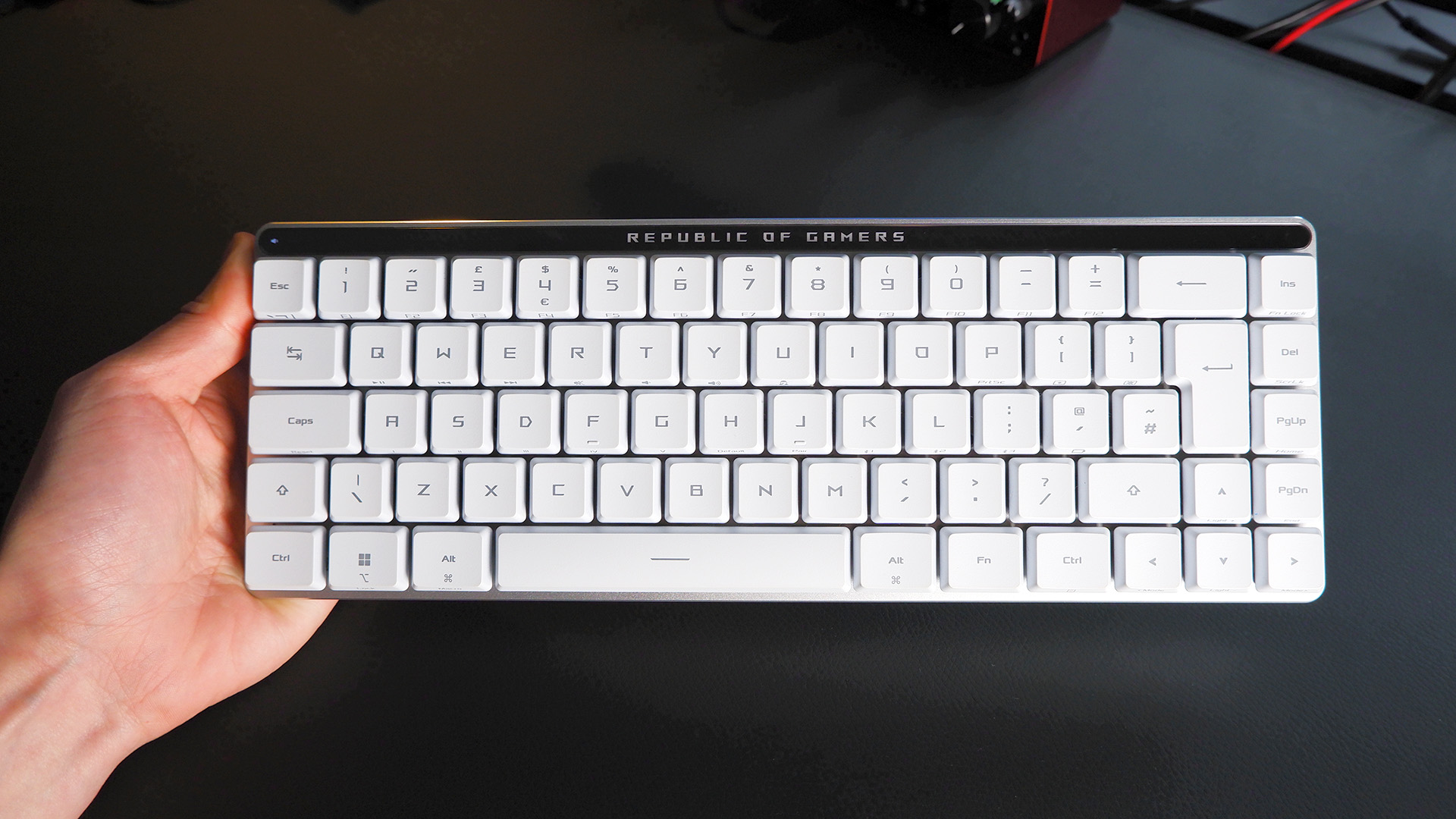

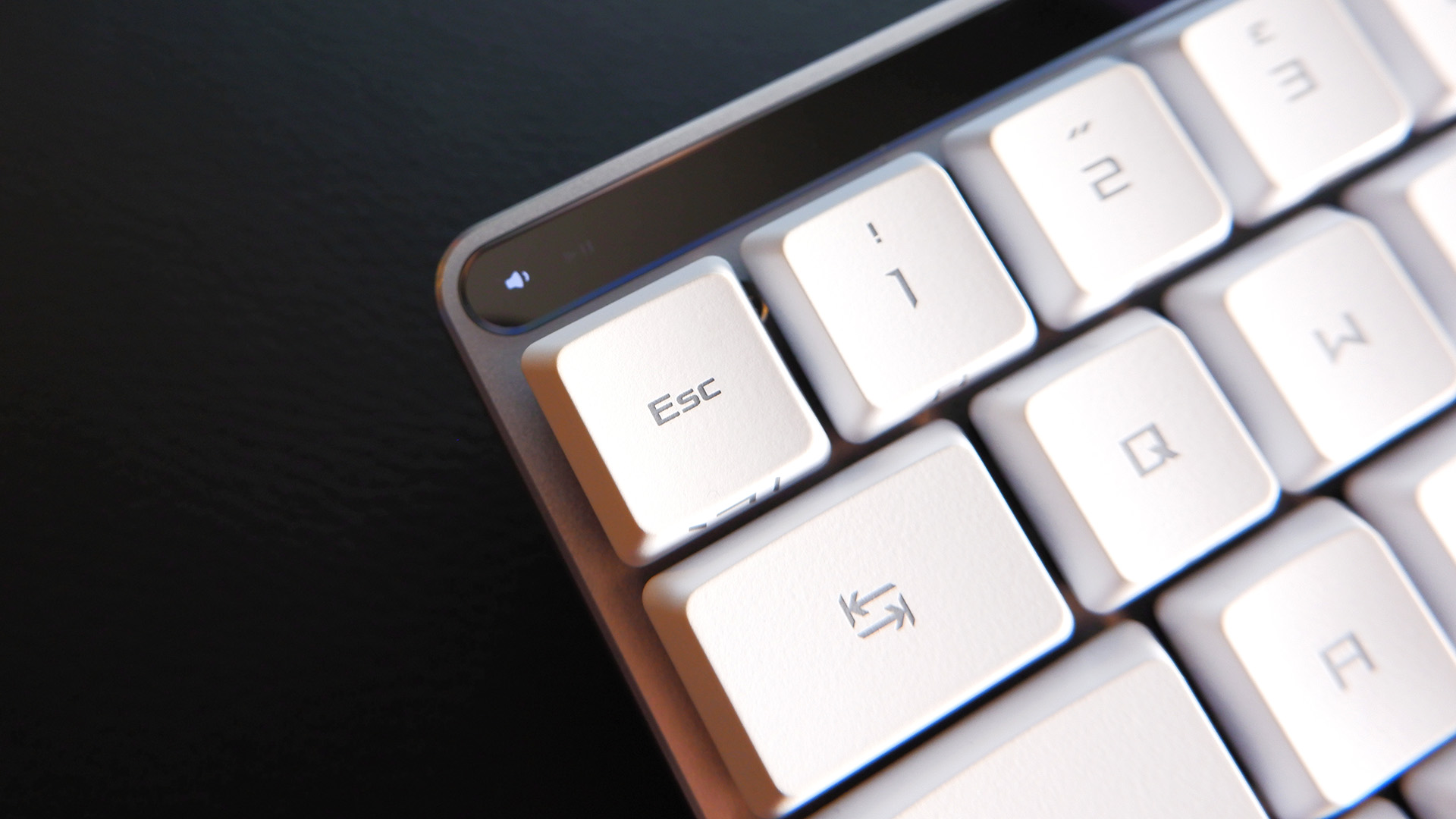
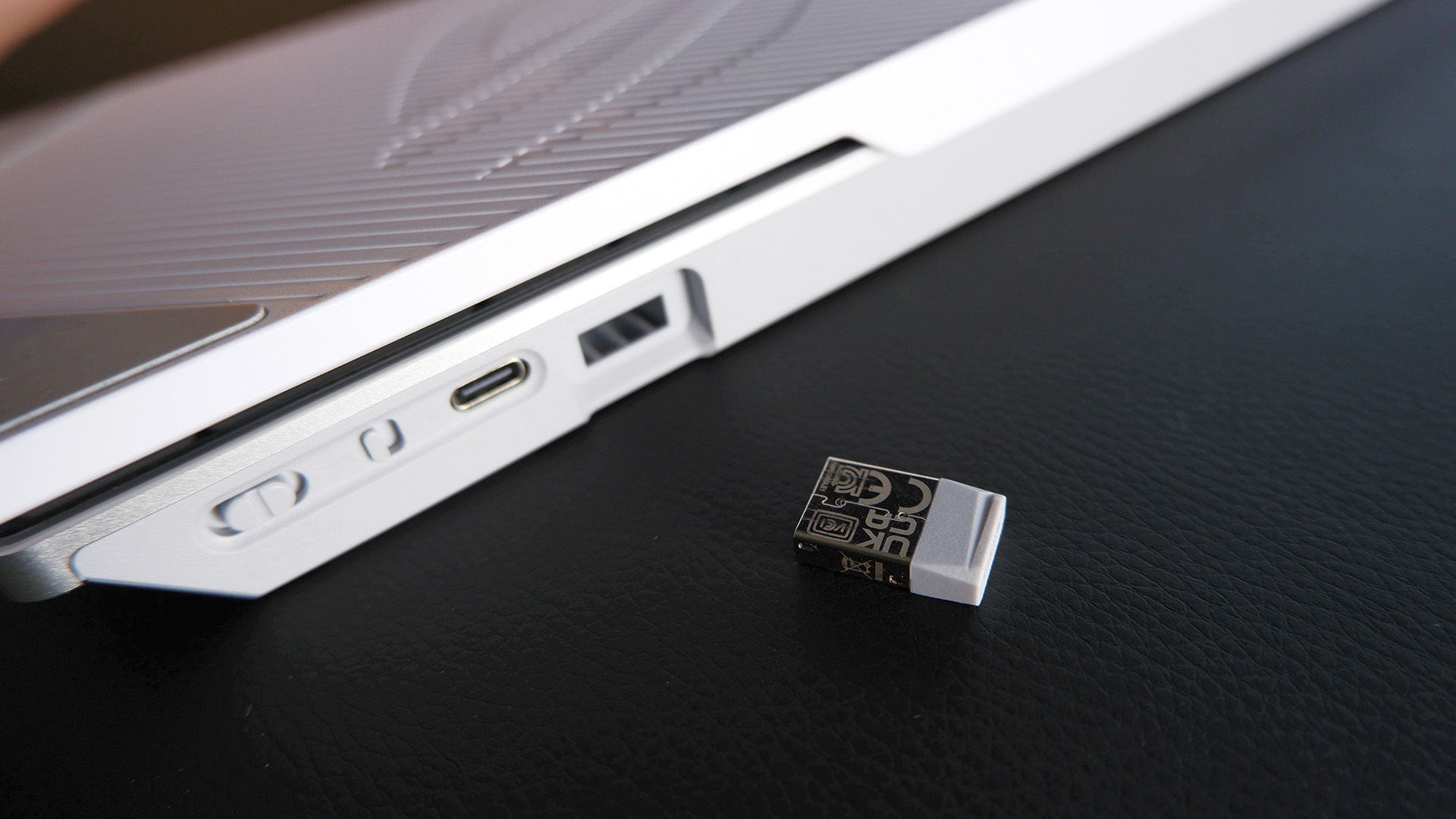

Specifications
Reasons to buy
Reasons to avoid
✅ You prefer a low typing position: You can get away with not bending your wrists as much as you type if you opt for a low-profile keyboard like this.
❌ You want a numpad or a function row: You won't find either on the Falchion Low Profile, although you can train yourself to use snazzy shortcuts to do it all instead.
The ROG Falchion RX Low Profile is the best low-profile wireless gaming keyboard for its blend of superb lubed switches and compact size.
Yes, you read correctly. Lubed switches. Much like its popular bigger sibling, the ROG Strix Scope II 96 Wireless, the Falchion offers lubed switches for a sleek typing experience. It really works wonders, too. I've never enjoyed using a low-profile board more than this.
The low-profile design of this board is easy to type on and reduces some of the pressure on your wrists throughout a gaming session or work day. However, a truly ergonomic board like the ZSA Moonlander might be more your speed if you really want comfort over all else. That takes some getting used to, whereas the Falchion is more the keyboard you already know, just shrunk down in size.
Despite its tiny size, the Falchion RX does come with sound-dampening and media controls—two things we hadn't expected to see on this sort of board. The media controls are pretty special, too. It's a capacitive bar along the top of the board, which can control volume and other functions of the board once set up via Armoury Crate.
The 60% size does forgo some of the usual keys we'd expect to find on a keyboard, such as a numpad and function row. That means you have to rely on shortcuts to achieve some things, or the Windows character pop-up for others (Win + .). For that reason, you might want to grab the tenkeyless Keychron Q3 Max instead for a little more flexibility.
With an absurdly long battery life rated to 430 hours with the lighting off, and both Bluetooth and 2.4 GHz connectivity, the Falchion RX Low Profile is a superb pick for a wireless gaming keyboard.
Though I do have to say, it's pretty darn expensive considering how few keys you're actually getting. Also, the non-standard stems on the keycaps may be a pain to swap out should you break one. Still, no keyboard is truly perfect, although if one came close, it might be another Asus model...depends on how much you really want low-profile, I guess.
Still going for low? Then this is the one you want. As low-profile keebs go, this is a bit of a cracker.
Read our full Asus ROG Falchion RX Low Profile review.
Best tenkeyless wireless gaming keyboard
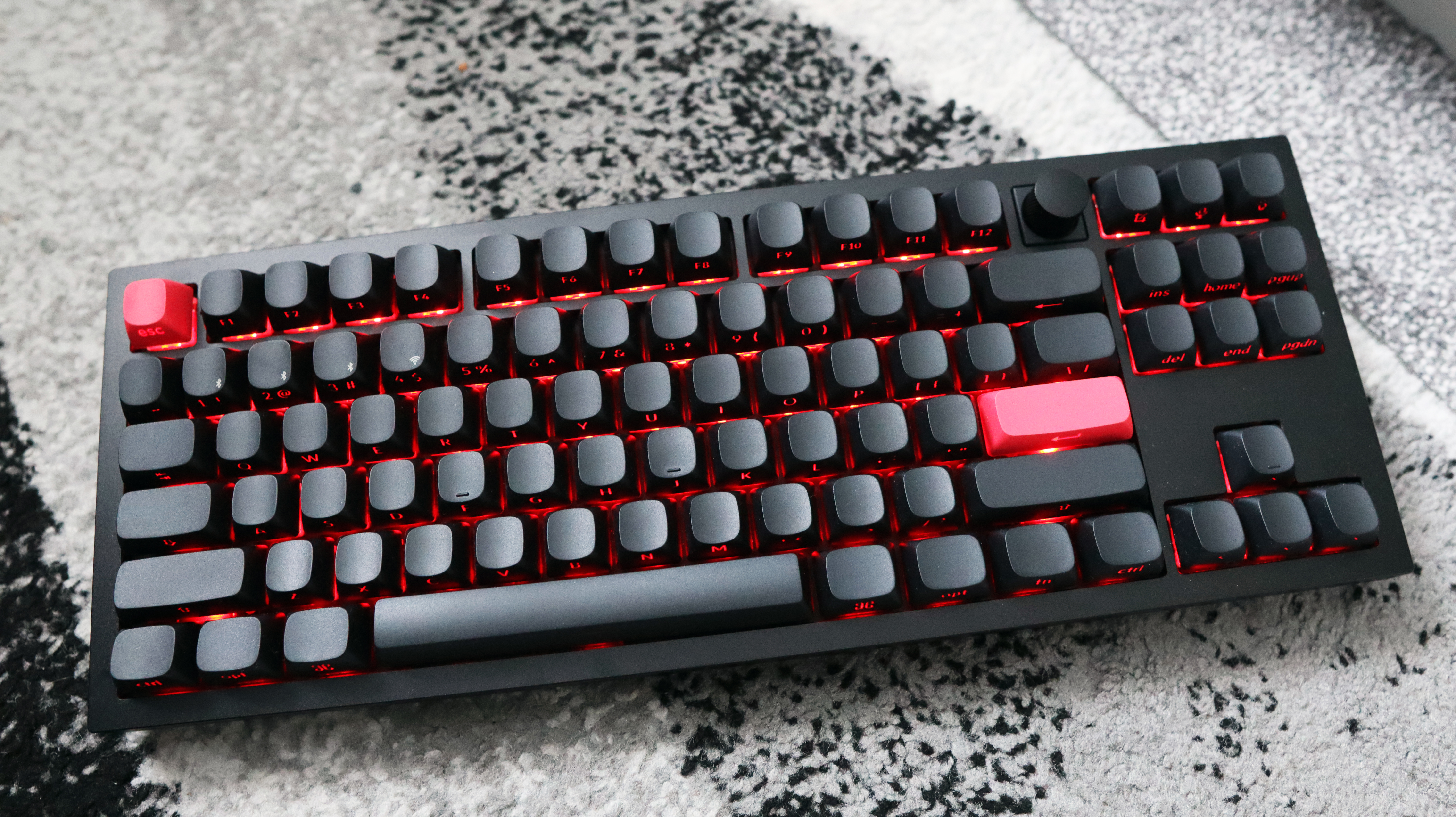


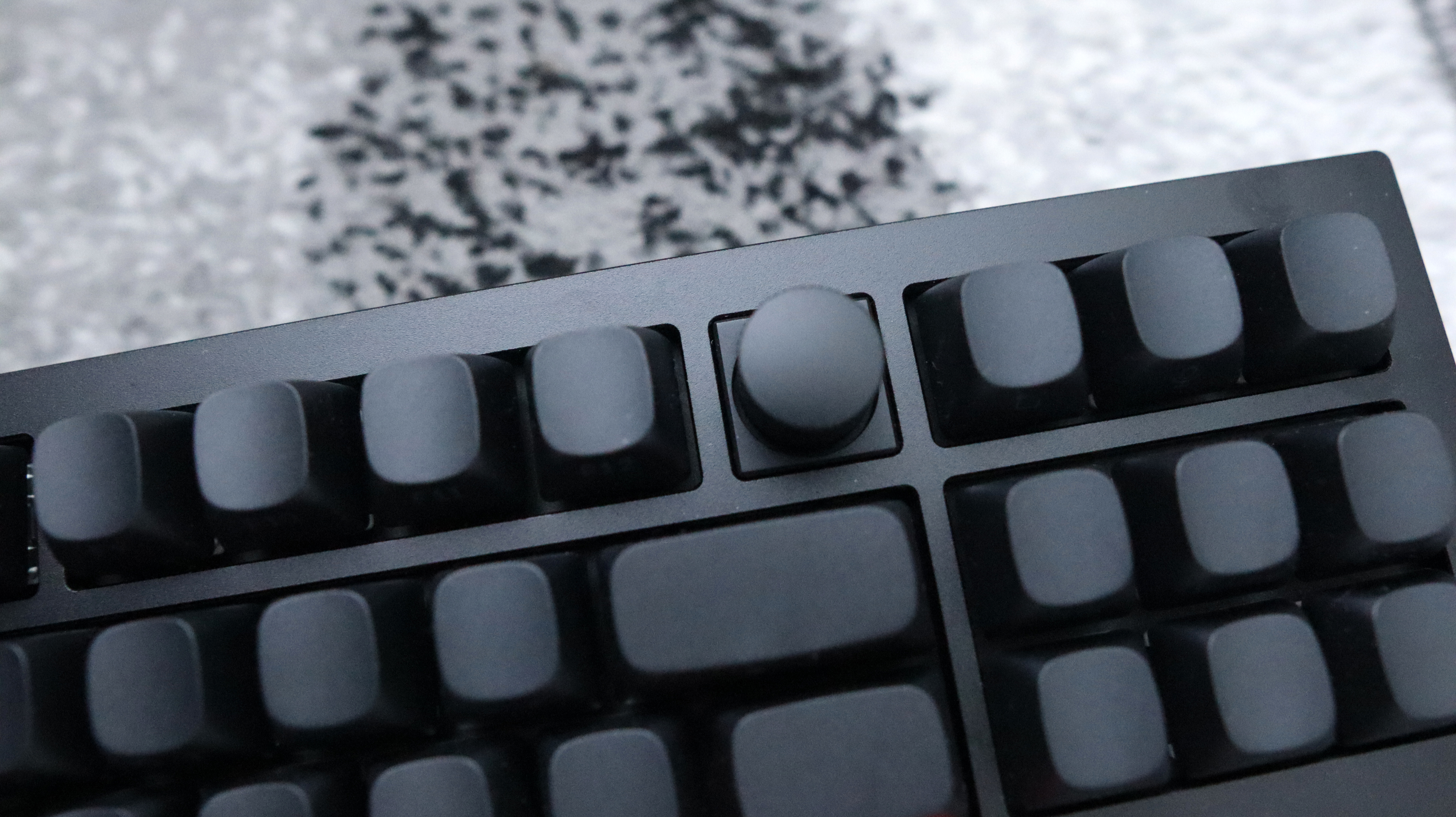
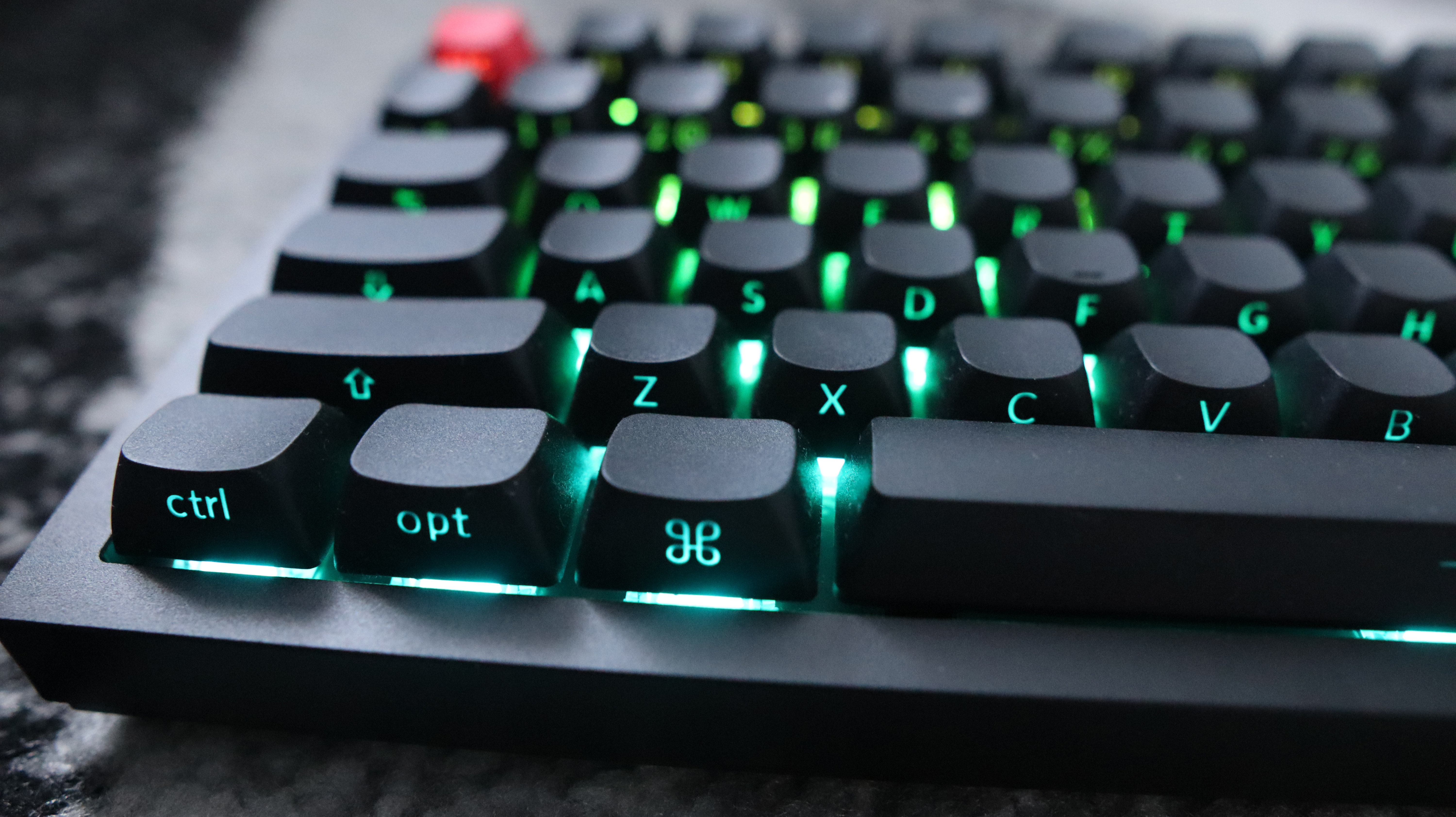
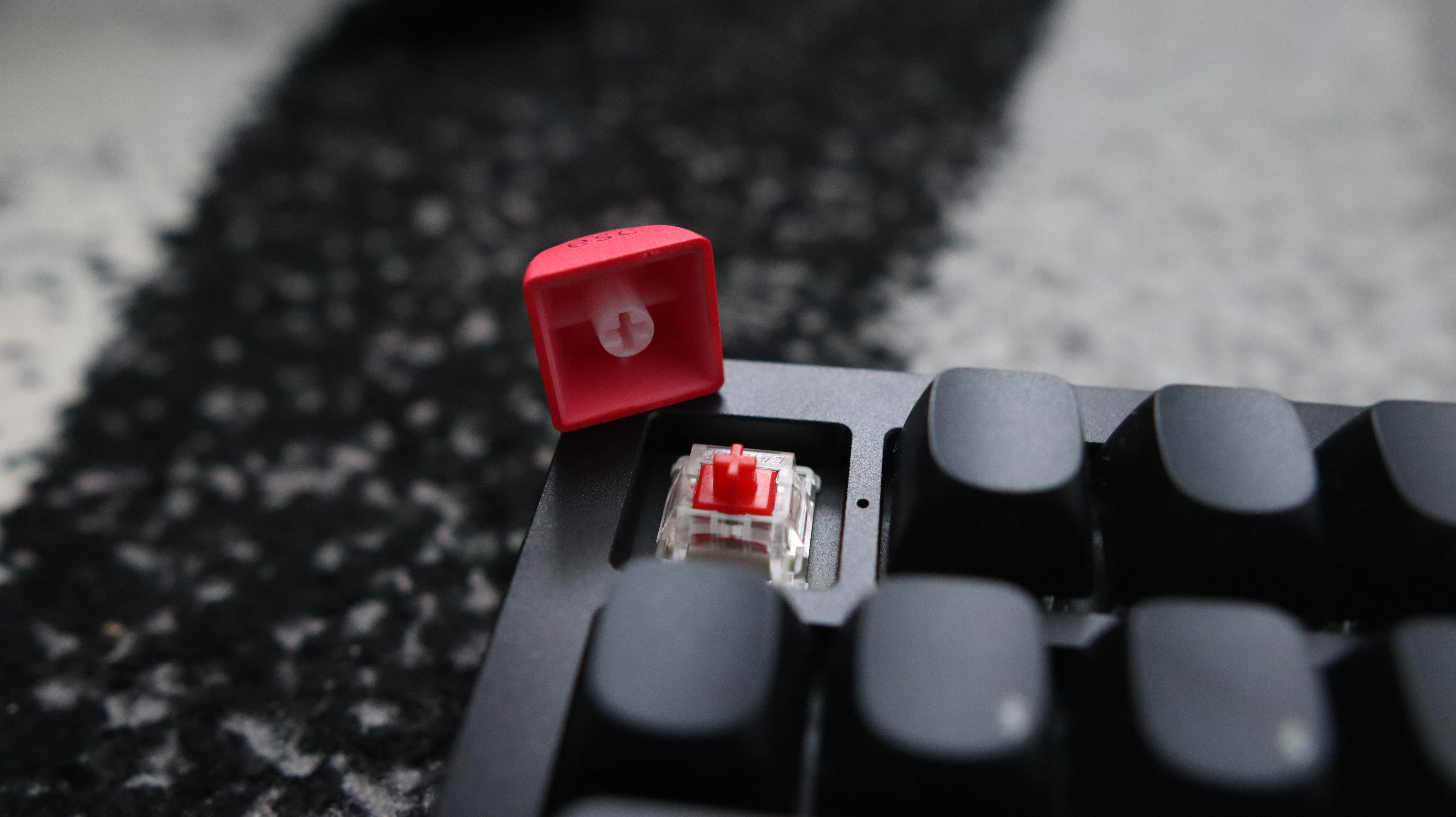
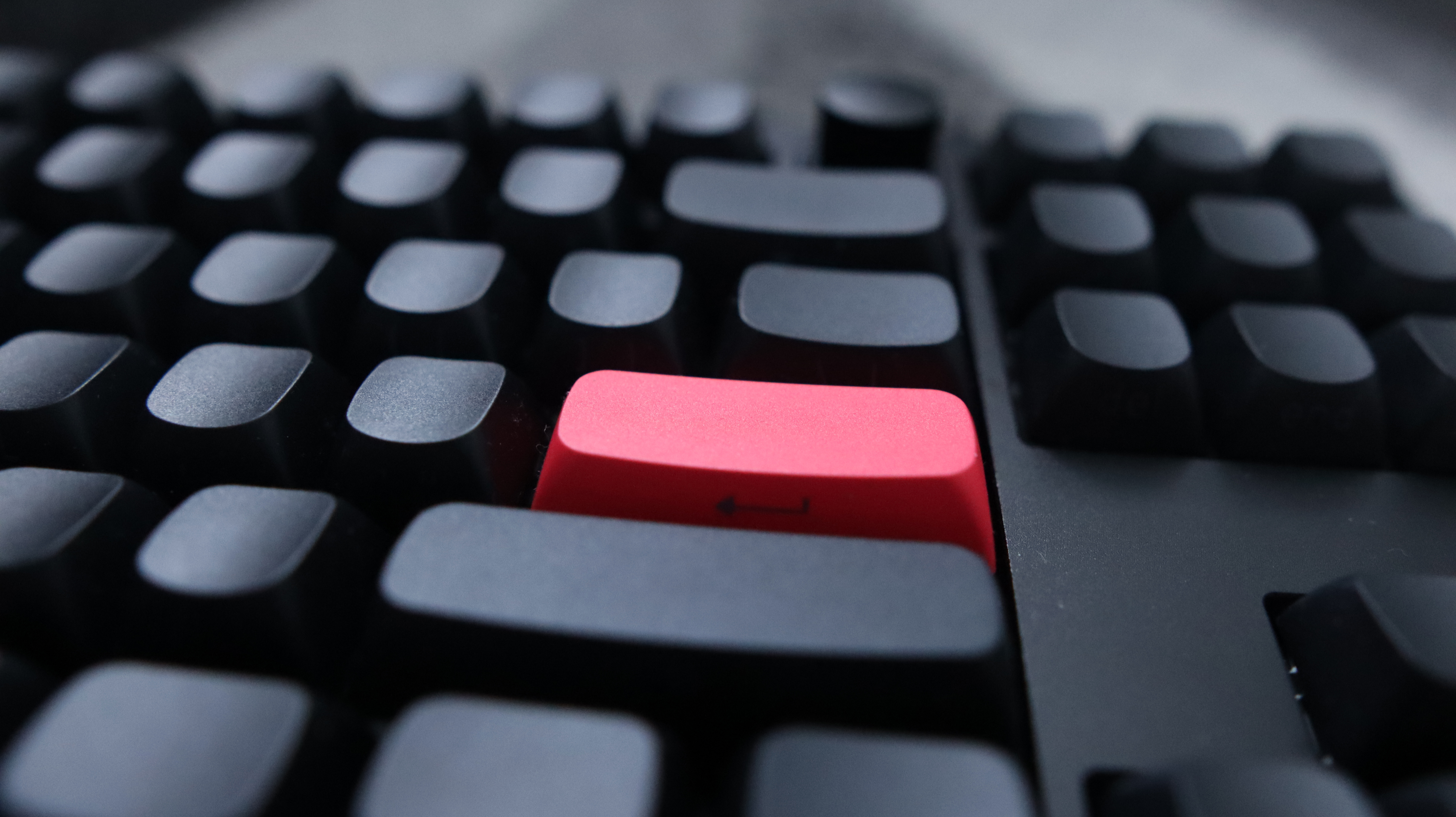
Specifications
Reasons to buy
Reasons to avoid
✅ You want the smoothest typing experience without wires: The Q3 Max offers one of the best typing experiences on any keyboard, let alone one without wires.
❌ You want an affordable keyboard: There's no getting around it, it's a pricey beast.
The best tenkeyless wireless keyboard is the Keychron Q3 Max. It's simply one of the best gaming keyboards around right now, let alone for the fact that it's also wireless over 2.4 GHz and Bluetooth.
The secret to the Q3 Max's success? Lubed Jupiter switches from Gateron and a rock-solid aluminum chassis stuffed with sound-dampening layers. It's the best-sounding keyboard I've heard in years, and I've tested a whole lot of them.
The battery life of around 100 hours with RGB enabled, or 180 without, is one of the reasons we like this board. Sure, it won't beat the ROG Falchion RX Low Profile, but with more keys, it's definitely one of this keyboard's stronger features. We only charged it once in two weeks of testing. Not bad at all.
For a compact board, the Q3 Max does come with media controls in the form of a multi-function dial, or knob as Keychron calls it, which sits in the top row. It's pretty understated, and it's handy for controlling the RGB effects on the board as much as anything else it offers.
You can hook up to three devices over Bluetooth, which can be changed via the board itself through the labelled shortcuts, and a dongle is provided for 2.4 GHz. It's a good pick if you plan to move between home and office a lot for added flexibility. And it's not too big for a backpack.
There are a few options for keycaps, one fairly straightforward set and another we reviewed with legends on the side, rather than the front. These also offer shine-through for the RGB effects and are altogether a pretty wicked addition.
Alas, the Keychron Q3 Max is an expensive beast. That's true of so many gaming keyboards today, but it doesn't make it any easier to swallow. Still, it's worth it if you can make your budget stretch. Compact wireless keyboards don't come any better than this.
Read our full Keychron Q3 Max review.
Best ergonomic wireless gaming keyboard
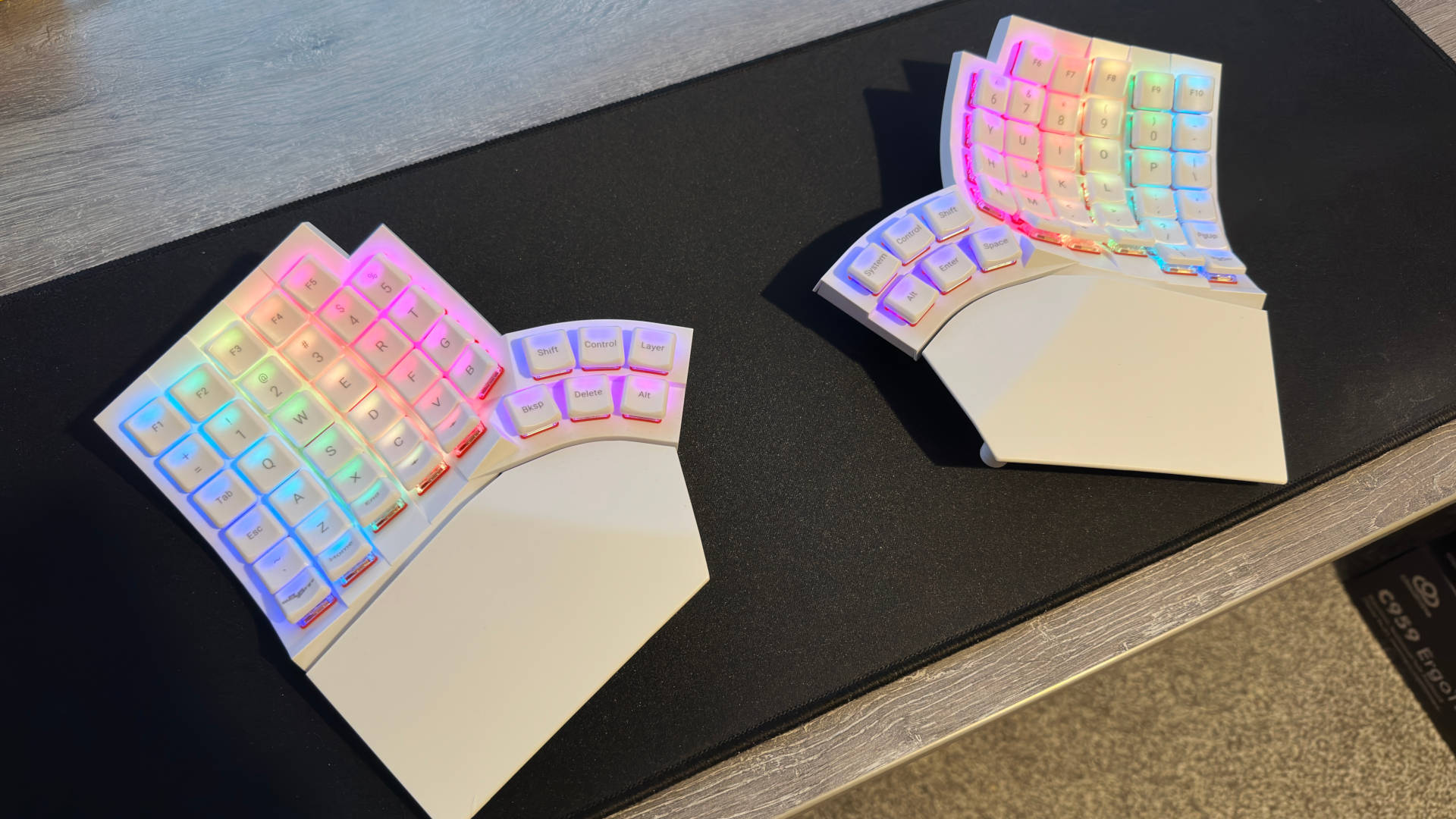

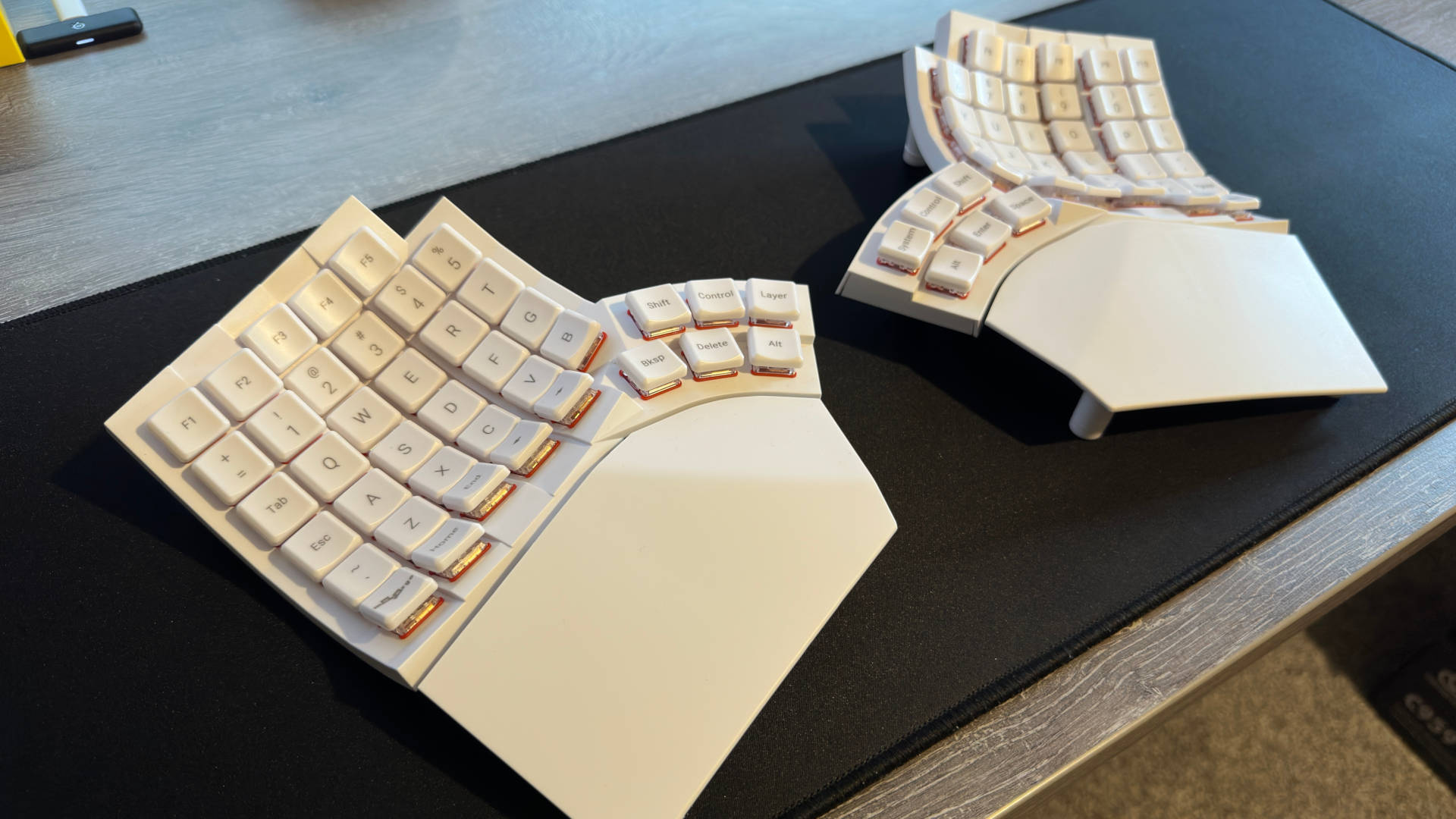
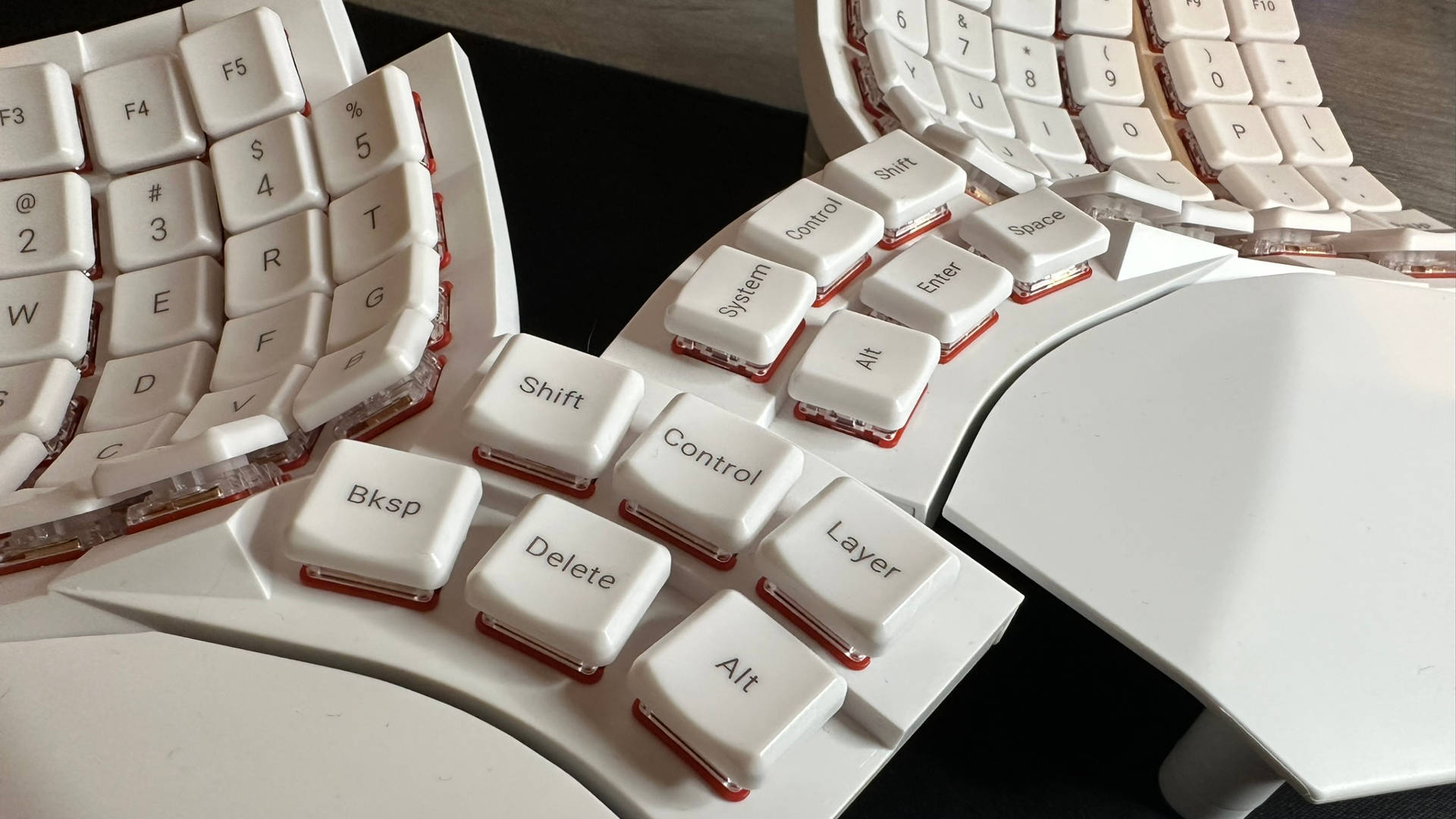

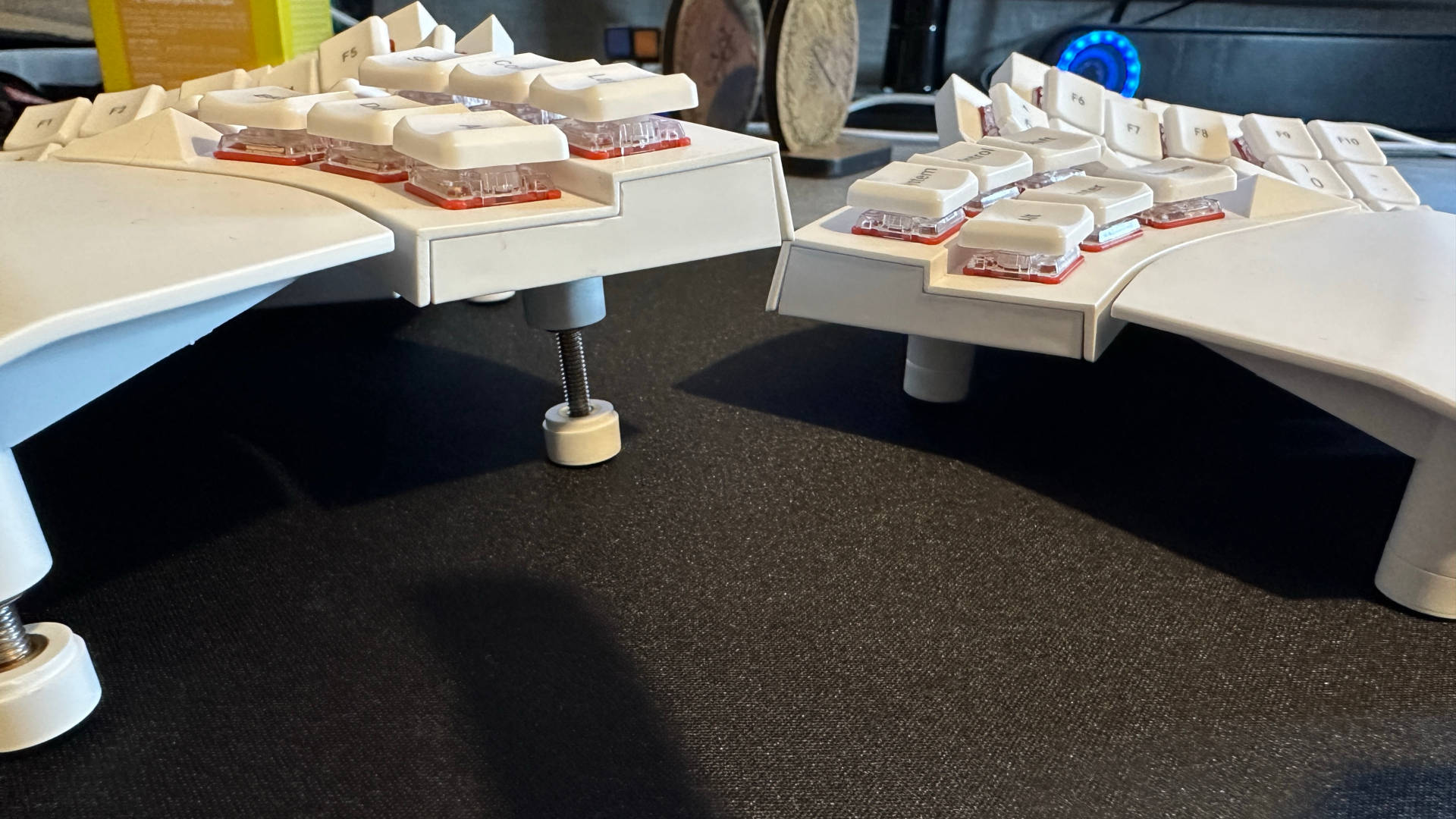
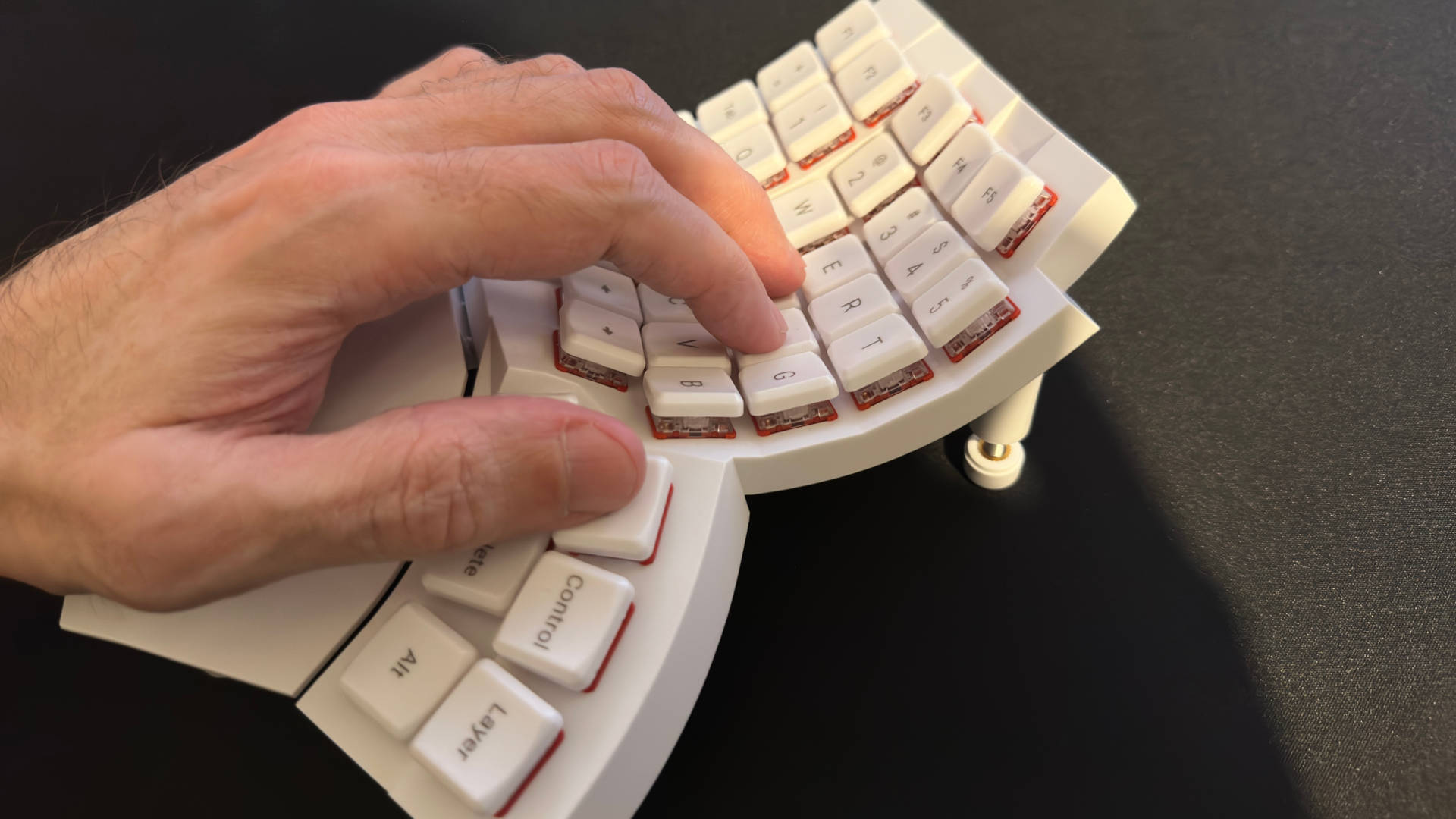
Specifications
Reasons to buy
Reasons to avoid
✅ You want the ultimate ergonomics: It comes equipped with every possible feature you could want to achieve the most natural and comfortable typing position.
✅ You want ergo everywhere: Highly portable and fully wireless, with support for multiple Bluetooth profiles, and a neat travel case, you can take this with you anywhere you go.
❌ You're not committed to change: The price, steep adoption curve, and fiddly setup demand that you put everything aside to master the Glove80.
Going cable-free doesn't mean you have to give up on low-stress, all-day comfort, and if you want the best ergonomic wireless keyboard, then the MoErgo Glove80 could well be perfect for you.
'Could be' is the operative phrase, though, as the Glove80 is so different from most keyboards that it will take you a long time to adapt to its split, highly curved, columnar arrangement of keys.
Oh, and the thumb islands, too. Commonly pressed keys, such as the space bar, return, shift, and so on, are all located in clusters of six keys, directly below your thumbs. It takes some serious brain-rewiring to use them fully, but eventually, it'll all become second nature.
The Glove80's ergonomics are highly adjustable, with multiple screw legs in the base of each section, to let you set the tilt and tent to your heart's...well, wrist's desire.
You get a choice of up to four Kailh switches when you order a Glove80, though it depends on what's available in MoErgo's store at the time. But it does mean you can have a near-silent keyboard or a loud clackity-clack, depending on your taste.
Despite effectively being two separate keyboards, only one of the halves connects directly to your computer via Bluetooth (no 2.4 GHz option, sadly). The other section communicates with the main part via its own BT module. You can pop a USB Type-C cable into it if you do want to use it wired, but it's mostly just for charging and updating firmware.
One aspect that might make you think twice about the Glove80 is the price. Such a boutique and bespoke isn't going to be cheap, and you're looking at the best part of $400 for one, with a rather nice travel case. And it has to be said that it doesn't quite feel like a four-hundred-dollar keyboard.
But if ergonomics means everything to you and you're willing to pay the price, both in time and cash, to have the greatest level of typing comfort you can get from a keyboard, then the MoErgo Glove80 should be top of your wishlist.
Read our full MoErgo Glove80 review.
Also tested
8BitDo Retro Mechanical Keyboard
The C64 version we tested has great battery life, satisfying keys, and a lovely aesthetic. It is, however, rather niche. It comes with programmable Super Buttons, which are effectively just extra keys that dangle on the side, and it's very loud, too.
PC Gamer score: 83%
Read our full 8BitDo Retro Mechanical Keyboard review.
Cherry MX 8.2 TKL Wireless XAGA
A great size, solid connectivity, and excellent battery life help this keyboard stand out. However, the software is mediocre, there are different profiles to swap on the fly, and it's very expensive.
PC Gamer score: 75%
Read our full Cherry MX 8.2 TKL Wireless XAGA review.
Ducky One X
The OneX has the feel of any Ducky gaming keyboard. That's the good news. The bad news is that Ducky needs to make big improvements to its software to make the most of the induction switches in this keyboard, which are easily knocked loose and lacking spares.
PC Gamer score: 60%
Read or full Ducky One X review.
Gamakay TK101
A middling mechanical keyboard that cuts a few corners in terms of build quality and battery life, but offers a decent typing experience and connectivity choices.
PC Gamer score: 64%
Read our full Gamakay TK101 review.
Razer BlackWidow V4 Pro 75%
This board offers a phenomenal experience for gamers and typists alike and comes packed with some welcome extras. But $300 is a steep price to pay, while its 75% layout won't be for everyone.
PC Gamer score: 77%
Read our full Razer BlackWidow V4 Pro 75% review.
Keychron Q5 HE
The Keychron Q5 HE is a brilliant mechanical keyboard with lots of power, a stylish chassis, and thoughtful touches elsewhere.
PC Gamer score: 82%
Read or full Keychron Q5 HE review.
Logitech G915 X Lightspeed
Ordinarily, we quite like a Logitech keyboard, and this one has a responsive, snappy feel, great battery life, and represents a solid improvement over the previous model. It's expensive, though, and the software leaves a lot to be desired.
PC Gamer score: 70%
Read our full Logitech G915 X review.
Lemokey L4
A seriously sturdy, battle-hardened keeb from Keychron's traditionally more affordable counterpart, with a lovely typing feel and sound. The problem? It's the same price as the Keychron Q3 Max, and we'd rather have that sublime typing machine instead.
PC Gamer score: 85%
Read our full Lemokey L4 review.
Logitech Ergo K860
If ergonomic's your aim, there's a lot to like about the sheer comfort of the Ergo K860. Unfortunately, the key feedback isn't great, and it's a pricey keyboard for what you end up receiving.
PC Gamer score: 78%
Read our full Logitech Ergo K860 review.
Alienware Pro Wireless
The Alienware Pro Wireless pulls off a neat trick—it manages to feel old school yet achingly modern at the same time. It's pricey, though, which means it runs into some seriously tough competition.
PC Gamer score: 84%
Read our full Alienware Pro Wireless review.
Logitech Pro X 60
It's as fast as you like, this esports keeb, but also a noisy beast. It's very well-made, but there are more civilised keyboards available for less.
PC Gamer score: 77%
Read our full Logitech Pro X 60 review.
Asus ROG Azoth
If it wasn't for the simply brilliant Keychron Q3 Max, this board would make it into this guide as a major recommendation. As fantastic as it is though, it's very expensive, but still a great shout if you've got the cash to flash.
PC Gamer score: 90%
Read our full Asus ROG Azoth review.
Corsair K65 Plus
Corsair has plumped for a subtle design here, and it's a bit of a triumph. The programmable media control dial is excellent, and its got a great overall feel. It's missing the odd expected feature, like shine through keycaps, but overall, it's a speedy and desirable board.
PC Gamer score: 88%
Read our full Corsair K65 Plus review.
FAQ
How do you test a wireless keyboard?
The first and most obvious factor determining the worthiness of a wireless keyboard is the stability of its connection. Regardless of the wireless tech used, the board must sustain a stable, responsive connection at all times. That's the paramount characteristic we pay attention to throughout testing.
Ultimately, the way we test is by using the keyboards day-to-day; for gaming and for typing during work hours. We take keen notes on the performance of its switches. Are they responsive? Were there any essential skips or ghosting?
Due to the inherent limitations of wireless connectivity, some features aren't possible for wireless keyboards. USB pass-throughs are out of the question. On the other hand, Audio passthrough is doable, but they're often omitted due to the subpar sound reproduction since audio signals are much more susceptible to noise. Backlights are a double-edged sword: they enhance the aesthetics but are also taxing on the battery.
This brings us to the battery life. If the keyboard continually needs to be charged or eats a deck of AA batteries a week, its wireless nature becomes a liability rather than a selling point. The type of battery also matters: integrated batteries save you money but can wear out over time. Removable batteries can be swapped out and instantly charged, but they tack onto the cost of the keyboard.
What size of keyboard do I need?
Keyboard size is absolutely a defining factor. Full-sized keyboards tend to offer the most features and a Numpad, but if you don't have space, then all of those extras you paid for will be useless. Tenkeyless boards (the ones with no number pad) and compact keyboards can be a great option, too, if you don't care about all the extra bells and whistles or you don't have any use for alt codes (how barbaric!).
What is the most important thing to look for in a mechanical gaming keyboard?
The switch type is arguably the most important choice to make when picking your new gaming keyboard. Cherry mechanical switches are the most common and most recognizable, but there are a host of alternatives on offer, as well as a bunch of upmarket, specialist switches to choose from.
What is the big deal with mechanical switches?
We can talk for hours about the feel of mechanical switches versus membrane switches, but ultimately, that's a personal choice. What makes mechanical switches objectively superior, however, is their far-extended life span. They can take far more punishment and keep responding long after a membrane switch has collapsed in on itself.
Are dedicated media controls a deal-breaker?
Only you can make that call, but we would suggest that at least having the option to toggle the top row between function and media controls would be our choice. Having a discrete volume wheel can be super useful, however.
Glossary
Actuation Point
The height to which a key needs to be pressed before it actuates and sends an input signal to a device.
Clicky
A switch that delivers an audible click every time it's pressed, generally right around the point of actuation.
Debounce
A technique to ensure that only one input registers every time a key is pressed.
Hall effect
A technology that uses magnetism to detect whether and how far down a key is pressed.
Housing
The shell that surrounds the internal components of a switch.
Hysteresis
The result of the actuation point and reset point in a switch being misaligned. This generally means a key needs to be lifted off further than normal before it can be actuated again.
Linear
A switch that moves directly up and down, generally delivering smooth keystrokes without noise or tactile feedback.
Mechanical Keyboard
A keyboard built around individual switches for each key rather than a membrane sheath mounted on a PCB.
Membrane Keyboard
A keyboard on which all the keycaps are mounted on a membrane sheath; when a key is pressed, a rubber dome depresses and pushes against the sheath and PCB beneath, actuating the key.
Stem
The component of a switch on which the keycaps are mounted on a mechanical keyboard.
Switch
The physical component of a mechanical keyboard beneath the keycaps on a mechanical keyboard. The switch determines how a key is actuated, whether or not it provides audible or tactile feedback with each press and more.
Optical switch
This is a type of mechanical switch which instead of a physical metal contact switch uses light to measure when actuation takes place. These can be more configurable too, allowing for not just off and on states, but more analog designs, and even dual actions for a single key depending on how far the switch is pressed down.
Tactile
A switch that provides a 'bump' of feedback every time it's pushed.
Tenkeyless (TKL)
A keyboard that lacks the right-hand number pad.
Keep up to date with the most important stories and the best deals, as picked by the PC Gamer team.

Jacob earned his first byline writing for his own tech blog. From there, he graduated to professionally breaking things as hardware writer at PCGamesN, and would go on to run the team as hardware editor. He joined PC Gamer's top staff as senior hardware editor before becoming managing editor of the hardware team, and you'll now find him reporting on the latest developments in the technology and gaming industries and testing the newest PC components.
- Andy EdserHardware Writer
- Reece BithreyContributor


